After my first trip to the country had been in winter, I was curious to find out what summer in Austria would be like. Most of the people I know associate Austria with winter sports and even though I knew that in summer hiking replaces skiing, I knew little more about what to do in the land of the “Sound of Music” after the snow has melted.
Enter #AustrianTime.
#AustrianTime is a campaign set up by the Austrian tourism board to show people what it’s like to have a genuine Austrian time. It takes them beyond the slopes, into taverns serving typical Austrian food, shops selling traditional Austrian wear and cable cars up lush green mountaintops.
I was invited to come along on an Austria road trip to discover what #AustrianTime is all about while getting a taste of no less than five different Austrian regions. Below, I’m sharing the exact route with you that we took. While we did switch hotels in Austria every night and I realize that’s not for everyone, I personally loved every moment of it and highly recommend you visit Austria in the summer too.
If you rather travel at a slower pace, you can take this itinerary as a starting point for your own trip. You can expand on it and stay longer in each region, or pick one region first and simply return to Austria until you’ve visited them all :-)
One last thing: all credit for this road trip route goes to Katrin from the Brussels Austrian tourism board. She literally took us along some of the most beautiful places in Austria. All I needed to do was enjoy the experience so I can now share it with you.
Interested in a specific activity or region? Click the item in the table of contents below. If not, simply follow along from day one until day eight.
Contents
- An 8-day Austria trip cruising through 5 regions
- Day 1: Innsbruck
- Day 2: Matrei in Osttirol
- Day 3: Heiligenblut
- Day 4: Millstätter See
- Day 5: Naturpark Sölktäler
- Day 6: sunrise hike and Altausseer See
- Day 7: from Ausseerland to Salzburg
- Day 8: explore Salzburg by foot and bike
- Practical information for travel to Austria
- Don’t forget travel insurance
- Don’t forget travel insurance
An 8-day Austria trip cruising through 5 regions
Day 1: Innsbruck
Things to do in innsbruck: a walk around town
After having spent two days in Vienna to take waltz classes and sniff up some Viennese culture, I took the train to Innsbruck to start my road trip together with Katrin from Visit Austria and fellow Belgian travel bloggers Bart from VetexBart and Bruno from Reisreporter.
I’d never been to Innsbruck before but had frequently been told it’s one of the best cities in Austria to visit. Upon my arrival at the Innsbruck train station, I could easily see why that’s the case.
Innsbruck lies in a valley encapsulated by mountains. Its center is made up of colorful houses that make you smile each time the sun hits them and on a Sunday the streets are so quiet you feel like you own the city.
That is until you get to Innsbruck Old Town. This is where most of the Innsbruck attractions are and thus it’s also where most visitors flock to first. We walked along the Maria-Theresien-Strasse from the Triumpforte or Triumph Arch past the Breakfast Club where I dropped in for a quick lunch while I waited for the others to arrive earlier that day.
From there, we entered the car-free zone which is clearly part of the area where people go shopping in Innsbruck. Yet this pedestrian area around the St. Anna’s Column has a more village-like feel to it than a commercial one.
We continued our Innsbruck sightseeing tour and spotted the pink Spitalskirche before entering the Herzog-Friedrich-Strasse. This is the street on which you can find the Stadtturm or City Tower and the Goldenes Dachl, the Golden Roof. Obviously, the Golden Roof comes attached to a house. If you want some additional Innsbruck information, the tourist office is also just around the corner from here.
The Stadtturm is one of the places to visit in Innsbruck as you can climb the tower to get a view of Old Town Innsbruck from above. Unfortunately, we didn’t have time for that so I put it on my list of things to do for when I visit Innsbruck again.
As I mentioned before, Innsbruck is quite unique among the Austrian cities as it’s totally surrounded by mountains. So what do you think we did after our walk around the town? We went up a mountain, of course!
Visit Innsbruck with a guide
If you’d like to visit Innsbruck with a guide, like we did, this group tour comes highly recommended. Alternatively, you can also book a private guide.
Taking the Nordkettebahn up the Nordkette
The Innsbruck Nordkette is part of the Austrian Alps and welcomes visitors all year long. In winter, skiers and snowboarders descend its slopes (though the bigger ski areas lie just outside of Innsbruck) while in summer hikers, mountain bikers and lovers of dazzling views take the Innsbrucker Nordkettenbahnen up.
This Innsbruck cable car actually has a few different stops. Visitors can choose to go partly up the mountain or all the way to the top, which lies at 2300 meters. As the best views are from the top, we did the latter.
This was the first of many times during our Austria tour that I had to face my fear of heights. I’m not a fan of cable cars and even though this was a big and sturdy one, I still felt uneasy and was happy when we got out.
Walking out of the Nordkette cable car station, I was immediately reminded of why I continue my fight with vertigo. Just look at this view:
There was even some snow left from the past winter.
Quick fun fact: there are places in Austria where you can ski all-year-long, like on the Hintertux Glacier and in most ski resorts, like in Serfaus-Fiss-Ladis, the winter season doesn’t end until late April or early May.
As the Innsbruck Bergbahn really takes you to do the top, you get a 360° view when you walk “around the edges”. On one side, you get a total view on Innsbruck, including the airport and the Europabrücke or Europe Bridge, a famous bungee jumping spot.
Before heading back into town again, we made a quick stop partly down the Innsbruck mountain. At 2000 meters, you still get great views here (and snow in June!) and we also managed to spot the swirling tracks that mountain bikers left behind right below us. When you have the time, go for some typical Tyrolean cuisine at the Seegrube restaurant, located right by the cable car station.
Practical information
The Nordkettebahnen take you up to the top of the Nordkette in just 20 minutes from the Hungerburg Funicular station. This station lies just a short walk from Innsbruck Old Town and was designed by the renowned architect Zaha Hadid. There are three stops: one at the Alpine Zoo, one at the Seegrube restaurant and one at the top.
Ticket prices vary depending on between which stations you travel, where you get out, whether it’s winter, summer or a Friday evening and whether you qualify for a discount or not. The price of a round trip for an adult can go up to €33. It’s pretty pricey, but worth it in my opinion.
You can book a round trip here.
To cut down on the cost, you could also take the cable car up and hike back down or, if you plan on doing more around Innsbruck, you can get an Innsbruck Card which gives you discounts on different attractions around the city as well as on cable cars, lifts, and public transportation.
And if my photos haven’t convinced you yet, maybe this Nordkette webcam will.
Dinner at Adlers
We ended our day at aDLERS, the highest hotel in Innsbruck with 12 floors and a restaurant on the top floor. As the weather was lovely, we grabbed a table on the terrace overlooking the city from the Bergisel ski jump (also a design by Zaha Hadid!) to Innsbruck Airport. We even saw two planes land!
As the sun set and we looked back on our day, I enjoyed a ginormous salad, the catch of the day and a sweet chocolate dessert. I haven’t tried any other restaurants in Innsbruck yet, but I’d say this one is a must!
aDLERS
Bruneckerstrasse 1
Innsbruck
Sleep at the NALA Individuellhotel
After a day of exploring, I quickly fell asleep the NALA Individuellhotel, a boutique hotel that serves a lovely breakfast buffet in the morning. As my time in Innsbruck came to an end, I knew I’d be back. An afternoon simply wasn’t enough to see all this city has to offer.
Also want to stay at the NALA hotel? Check here for more reviews, prices, and availability.
Day 2: Matrei in Osttirol
The second day of our Austria travel itinerary was dedicated to nature. We left the city and drove straight to the Hohe Tauern National Park in Osttirol for a quick hike.
Hike the Nationalpark Hohe Tauern
We parked our car by the Matreier Tauernhaus in Innergschlöss where we met up with park ranger Emmanuel and Eva from the Osttirol tourism board. They would guide us on our walk through the park.
This short hike would result to be a little warm-up for the coming days and the start of many many summer hikes in Austria for me, but at the time, we remained fully in the moment. It had been a while since I’d been so immersed in nature and I enjoyed the fresh air while admiring the mountains towering above me.
Emmanuel kept looking up in search of birds of prey and we managed to spot some vultures through his binoculars. The cows were easier to spot, lazing in the fields along the road that leads up to the actual entrance of the park.
Where there are cows, there are (usually) people and yet I was surprised when we came across a small stone church. There’s a funny story behind this chapel, which Eva from the Osttirol tourism board explains best:
The sacred building in Gschlößtal dates back to a chapel built in 1688 by the farmers of the valley. Since the Archbishopric of Salzburg, however, had doubts about the meaning of a chapel in this area, the Archpriest of Gmünd in Carinthia was asked for an opinion.
The Archpriest, who was responsible for the supervision of the parishes in the part of Osttirol, which was part of Salzburg, was skeptical about the church building and denounced the “boyish” life of the farmers. Above all, the illegitimate pregnancies were criticized by him. The Salzburg church authorities forbade the construction of the chapel.
This, however, had already been almost completed by the farmers from their own resources, because the letters took to long on their way. This, and the high popularity the chapel found, ultimately led the church authorities to give their consent to the chapel.
The original chapel was located in an avalanche area and was destroyed twice by an avalanche. The chapel was then moved to a mighty rock block in 1870, whose natural cave was extended to a natural stone vault. The license was issued in 1880. Between 1969 and 1970, the chapel was renovated and re-ordinated on 6. Sept. 1970
After what had been a couple of hours but seemed like a mere 30 minutes, we reached a tavern. Waiting for our ride back to the Matreier Tauernhaus, we decided to have a pre-lunch snack and so we ordered an assortment of cakes to try along with a few refreshing drinks.
Have lunch at the Matreier Tauernhaus
Getting back to the Matreier Tauernhaus, I decided to go for a traditional Austrian lunch and so I ordered dumplings. Now, you may associate dumplings with Asia, but Austrians are quite fond of rolling things in a ball and then “dumpling” them. While I quite liked my spinach dumpling, I have to admit the cheese dumpling was a bit too much for me but hey, trying the local foods is just one of the things to do in Austria!
Visit the Schaukäserei
After lunch, it was time to get ready for dinner.
Wait, what?
Yup, we were going to visit a newly-opened cheese-making “factory” and buy our cheese for dinner there.
The Schaukäserei was a cheese factory in the past, but it closed as such in 1937. When it did, the owner gave the factory to a bank under the condition that if the region ever needed a cheese factory again, the building would get its old function back. And that’s exactly what happened after a local association decided to found a new cheese factory back in 2014.
The Schaukäserei plans to process around 300,000 liters of milk between May and September, turning it into different kinds of cheeses (mmm, cheeeeese…). They sell directly to visitors of the park, but also through a local market hall and to restaurants.
Cheesemaker Mathias Wibmer focuses on creating high-quality cheeses and proudly carries the title of Molkereimeister. It’s the highest possible title for a cheese maker and only as recent as 2013 did it become possible again to obtain it by following the specific training.
All the milk he uses comes directly from local farmers, who are paid a fixed milk price that’s higher than what the competition pays. What’s interesting is that both the Schaukäserei and the local farmers are part of the association I mentioned earlier and so both have a say in how the business is being run and enjoy the profits.
The local aspect doesn’t only come forth in the product on sale. It’s an essential part of the Schaukäserei’s identity. The pictures on the factory’s website were taken by an Eastern Tyrolean photographer and the logo was designed by a local artist.
Another place that’s all about local products, crafts, and ecology, is the hotel where we’d have the best meal of our trip as well as spend the night. More on that below.
Practical information
The Hohe Tauern National Park is open all-year-round and accessible free of charge. From July to September, you can book a park ranger to go hiking, from mid-December until Easter, they can take you on a snowshoeing walk. It’s also perfectly possible to visit and hike the park by yourself.
The Matreier Tauernhaus can be found at Tauer 22, Matrei in Osttirol. Aside from offering lunch, it’s also a hotel. You can check prices here. There are also alpine huts throughout the park where you can stay from mid-June until September.
The Schaukäserei is located around the corner from the Matreier Tauernhaus.
Cooking demonstration, dinner and sleep at Hotel Outside
We spent the evening of our second day at Hotel Outside in Matrei in Osttirol, where we got a quick lesson in making ravioli from the chef who’d later prepare us a multi-course dinner that I won’t easily forget. To read more about those experiences, as well as what the hotel has to offer and how well the cook can sing (really!), check out my post about the places we stayed at during this trip.
Also want to get spoiled at Hotel Outside? Check here for more reviews, prices, and availability.
Day 3: Heiligenblut
Next up on our Austria itinerary was Heiligenblut am Grossglockner in the Carinthia region. We used this little town as our base for hiking a part of the Alpe-Adria-Trail in the Grossglockner National Park.
Hike the Alpe-Adria-Trail
The complete Alpe-Adria-Trail is no less than 750 kilometers long and passes through Austria, Italy and Slovenia. We only walked the first part, starting at the Kaiser-Franz-Josefs-Höhe.
For someone with a fear of heights (me!), the start of the trail is the hardest. It goes down a narrow staircase that’s built into the side of the mountain. Softening the terror is the impressive view of the Grossglockner, the highest mountain in Austria with a height of 3798 meters, and the Pasterzengletscher, the largest glacier in the eastern Alps.
Leaving an empty pathway between the mountains, the Pasterze silently shows the effects of climate change as it currently decreases about 10 meters every year. Now measuring around 8.4 kilometers in length, its volume has already halved since it was first measured in 1851.
However confronting and saddening that fact, we couldn’t help but let the beauty of this place overpower us. Standing at the bottom of the staircase, my knees still wobbling from tensing up out of fear, I felt grateful for how small this place made me feel. The Grossglockner Pasterze and its surroundings were a true reminder of how big the world is and of how many wonderful parts of it I still need to discover.
But first, my short human legs needed to carry me further along the trail and so they did.
Leaving the glacier behind us, we walked to the Sandersee where we stopped for a quick snack while a group of school kids played in the turquoise-colored water of the lake. They were the only other people we’d see on our hike. We did also spot a few marmots, cows, and even a few ibexes from afar. Oh, and let’s not forget that bright white bull which we wisely decided to walk around as it blocked our path.
Here’s another fun fact: at the start of summer, farmers take their cows up into the mountains where they stay until the end of September. Then, they’re taken down to the valleys where they spend winter. This descent back into the valleys is called the Almabtrieb and is a full-day event, with the cows parading down wearing beautiful decorations and festivities and the farm upon their arrival.
We climbed a hill and descended again, only to have our breath taken away by the Margeritzensee as we’d just regained it. Passing through a more forest-like bit we reached a summer house from where the rest of our walk went downhill, past the Leiterfalls waterfall into the Möll Valley.
There we took a short break at the Briccius Chapel where the thick walls allowed us to cool down before heading out again and walking the few last meters to the Briccius Sennerei Sattelalm where we’d have lunch.
After that, a mere 30-minute walk (we were used to more by now!) took us to the meeting point where a shuttle picked us up to take us back into Heiligenblut.
Practical info
The starting point of the Alpe-Adria-Trail, the Kaiser-Franz-Josefs-Höhe, can be found at the Grossglockner Hochalpenstrasse 1210 in Heiligenblut.
Make sure to wear appropriate hiking gear.
Visit Heiligenblut’s pilgrimage church
Back in Heiligenblut, we paid a quick visit to the Wallfahrtskirche Heiligenblut. The Church of Saint Vincent is a pilgrimage church that happened to be conveniently located right next to our hotel and the restaurant we’d later have dinner at. Not that you ever have to go far in this town with only 1,000 inhabitants.
But back to the church. The St. Vincent Church is one of Austria’s most famous churches. It’s named after patron saint Vincent of Saragossa and contains the remains of the Holy Briccius, who’s chapel we’d seen earlier that day. What the church is most famous for, though, is the few drops of Christ’s blood it supposedly holds.
The legend goes that the Danish prince Briccius was killed by an avalanche in the Möll Valley where his chapel now stands. He supposedly carried with him a small bottle which contained a few drops of Christ’s blood. The bottle with the blood was stored in the local church and gave Heiligenblut – “Holy Blood” – its name.
Also noteworthy is the book of steel that holds the names of all the people that died in the surrounding mountains.
Dinner at Kirchenwirt and sleep at Lodge Grossglockner
Before resting our tired legs at Lodge Grossglockner, we had a local three-course meal at the terrace of Kirchenwirt which overlooks the valley.
Want to stay in the center of Heiligenblut, like we did? Check here for more reviews, prices, and availability for Lodge Grossglockner
Day 4: Millstätter See
Our next stop was Millstätter See, a lake in Carinthia surrounded by forest and stately houses. There we met up with Michaela from the local tourism board for a boat ride.
Boat trip on the lake
When you visit Austria in summer, you can’t ignore the country’s lakes and Millstätter See is a beauty. Visitors can rent a paddle or a (slow) motorboat to enjoy some time on the water, even having a picnic on board or at one of the picnic stops by the shore. The water is also the best place from where to admire the former summer houses of the Austrian nobility.
The tourism board offers special packages that include a picnic for two and a boat ride, or you can just rent a boat yourself.
Lunch with a view
After our time on the lake, we headed back into the mountains for a view of Millstätter See. The Sternenbalkon (“Balcony of Stars”) is a viewpoint with a small platform sticking out over the mountain offering some great photo opportunities.
Don’t just stick to the platform though, as I loved the view from the terrace of the little taverna few meters from it as well. We had a lunch there, which consisted of a wooden plank covered with meats and cheeses – a dish we had on several occasions during our trip and is typical as it is simple and tasty. Lunch was topped off with Kaiserschmarrn, a typical Austrian dessert. Yum!
Visit the Granatium
After lunch, we drove to the Granatium, a museum dedicated to the stone kind granatium which can be found in the region. It used to be popular for making jewelry with. It then went out of fashion but now the gems are becoming popular again. At the Granatium you can see all kinds of – indeed – granatium as well as try your hand at carving the stones out yourself.
Granatium
Klammweg 10
Radenthein
Dinner and sleep at Hotel See-Villa
After a refreshing shower, we enjoyed a three-course meal on the terrace of Hotel See-Villa before also spending the night there.
Want to spend a night or two at Hotel See-Villa as well? Check here fore more reviews, prices, and availability.
Day 5: Naturpark Sölktäler
On day 5 we drove from Carinthia to the Naturpark Sölktäler in the region of Schladming-Dachstein.
Visit Schloss Grosssölk
Our first stop was at Schloss Grosssölk, a 14th-century castle now housing a permanent historical exhibition on life in the region 200 years ago. We also got to see a temporary exhibition around wolves and had a snack in the Sölker Jesuits Garden, which showcases all kinds of herbs, vegetables, and flowers.
Schloss Großsölk
Großsölk 55
Großsölk
Lunch at Erzherzog Johann Hütte
From there, we drove on for a quick look at where next day’s – or should I say night’s? – sunrise walk would start. We’d climb to the top of a mountain – of course we would – and I already felt my knees getting weak. I tried to shake off the fear and simply focus on our next activity: lunch!
For lunch, we took a seat at the terrace of the Erzherzog Johan Hütte. It was the perfect spot. Food was served at large picnic tables right at the foot of the Sölkpass.
Erzhertog Johann Hütte
Kals am Großglockner
Hike the Mahdfeldalm
We didn’t have coffee at the hut tavern, though. We kept that for a mere five minutes into our hike around the Mahdfeldalm in the Schladming-Dachstein mountains. There stood a hut without any electricity, where coffee was prepared per mug by heating water over the gas fire. Enjoying our cup in the afternoon sun, I could tell everyone struggled a bit to get up again and continue our walk.
We were quickly re-energized, though. If it’s one thing the Austrian mountains can do, it’s that they motivate you to explore further. After a steep walk up, we reached the highest point of our walk: a farmer’s cabin.
The cool thing about farmer mountain cabins in Austria is that they’ll often have this hollow tree trunk with cold mountain water running through it in which they place drinks. Yup, drinks! When the farmer’s home, you simply pay him for your refreshment and when he’s not, you put the change in a box by the door. It’s an honor system and in the small towns in Austria, it seems to work. I think it’s a great system for when you go hiking in summer as you’ll get to quench your thirst without having to carry a lot of bottles with you.
On our way down from the farmer’s cabin we came across the owner of the hut we’d previously had coffee at. We found out the hut owner was actually the son of the farmer and he stopped to have a little chat. He’d better not, though, because when he hit the gas again, his who-knows-how-old car wouldn’t start anymore.
Volkhard, one of the people from the local tourism board who was guiding us, stayed behind to help him out and luckily he rejoined us after a few minutes, telling us the car was working again.
On our way back I couldn’t believe the road that car had followed to get up there. We literally had to climb over pointy rocks at some points. It wasn’t that hard for us, but for a car? That guy had some driving skills!
Dinner and sleep at the Kaltenbachalm
After our walk, it was time to head to our resting place for the night, the Kaltenbachalm. The Kaltenbachalm is a typical Austrian hut where farmers live in summer and visitors can stay when they go Austrian hut-to-hut hiking or want to explore the area.
But now it’s time for the most challenging part of our trip.
Day 6: sunrise hike and Altausseer See
Sunrise hike the Hornfeldspitz
The benefit of summer hiking mountains in Austria is that it’s warmer to do so than in winter. The downside is that the sun rises much earlier and that if you want to go on a sunrise hike, you need to get up bloody early :D
After only three hours of sleep (and none for me as I couldn’t catch it – sleep, that is) in the room above the cow stable, Volkhard’s alarm went off telling us it was time to get up again. Only taking what was needed, we got into the car while it was still pitch black to drive the two minutes up to the start of the trail.
Our goal? Watching the sunrise from the top of the Hornfeldspitz at 2277 meters. It would be a little less than a two-hour climb up along a narrow, rocky path running along the spine of the mountain.
I managed pretty well until, about halfway up, the wind got increasingly stronger and I started to get afraid to lose my balance. I didn’t stop to look around me, I didn’t take any photos, I just pushed on. With the top in sight, I squatted down for the briefest second. I was terrified. Volkhard, who was leading us and who walked in front of me, grabbed my hand and changed gears, racing us both to the top.
I’d made it.
The wind was strong, the land at the top steep. I sat down and it was as if my body blocked. Drenched in sweat – more from fear than from being warm – I managed to change shirts before I curled up under the windproof blanket Volkhard gave me. The sun was about to rise in a few minutes but all I could think about was that we’d have to get back down again as well.
I sipped from the warm tea we brought up with us and ate a cookie (Hey, I was still me). Letting it all sink in, my breathing slowed down and I dropped a tear or two. Stress release in the form of salty water.
Watching a sunrise from an iconic place had been on my bucket list and I was glad I climbed up there. I was glad that I didn’t give in and reached the top. But you know what? I also have to admit I wasn’t that sorry when clouds formed in the sky and hid the actual sunrise from us. It meant that I didn’t have to go stand all the way at the top and look around me. It meant that I could stay put, shivering from being cold as all the adrenaline left my body.
When the others started to gather their things, I realized the moment had come. We’d go down again. Volkhard grabbed my hand – I’m forever grateful for this man’s help – and guided me along the first and for me worst part down. When I felt more at ease, I let go and felt a sudden feeling of victory roll into me as I breathed in the morning air.
I’d actually hiked up a darn high mountain.
A weight fell off my shoulders and I finally dared to stop and take some photos. I know I could’ve gotten some amazing shots up there if I hadn’t been scared, but what I gained that day is so much more precious than a digital memory.
As I write this, my eyes well up with tears again. It just shows how much of an impact that hike has made on me. And while I already mentioned Volkhard, I also have to thank my fellow travelers for supporting me through this and the many other times I needed to tackle heights on this trip. It’s something I’ll never forget and I know these challenges have made me stronger.
All of that personal stuff aside, the hike wasn’t that hard physically. If you’re in somewhat of a decent shape, you’ll be fine getting up and back down again.
Lunch by the lake at the Kohlröserhütte
After breakfast and a much-needed cup of tea at the Kaltenbachalm, we left the Naturpark Sölktäler to drive to Ausseerland. There we met with the former mayor of Bad Aussee, a friendly gentleman who proudly told us about the local traditional outfit he was wearing and the region he calls home.
We talked over lunch at the Kohlröserhütte, a grand new restaurant right by the Ödensee with a splendid view of the lake. We all chose fish and enjoyed our meal, which we no doubt unsuccessfully tried to work away with a walk around the lake afterward.
Even though the sky was grey, we were all fascinated by the reflections cast by the surroundings on the lake and the natural beauty of this place. We spent at least the same amount of time taking photos as we did going around.
Kohlröserlhütte
Ödensee 144,
Bad Aussee
Visit a saltmine
We’d planned a walk around the Altausseer See as well, but the dripping skies changed our plans and made us head underground. We visited Faszination Salzwelten, a former salt mine through which you can take a guided tour. While salt mining used to be a big industry in the region, this mine is mostly known because of the artwork the Nazis hid there during the Second World War and its feature in the Hollywood movie “The Monuments Men”.
Altaussee Salzwelten
Lichtersberg
Dinner and sleep at Mondi-Holiday Seeblickhotel Grundlsee
Our resting place for the night was the Mondi-Holiday Seeblickhotel in Grundlsee, where we also had dinner.
Want to stay at the Mondi Seeblickhotel too? Check here for more reviews, prices, and availability.
Day 7: from Ausseerland to Salzburg
The next day, we went for a short boat trip before heading to Salzburgerland.
Boat trip and hike around Toplitzsee and Kammersee
The Drei Seen Tour is a tour along the Grundlsee – next to which we spent the night, de Toplitzsee and the Kammersee, including the walking routes between them. We parked the car nearby the Toplitzsee and jumped (carefully) on a wooden boat or “Plätten” that brought us across. From there, we could hike the few minutes to the Kammersee.
What a scenery yet again.
The Kammersee can only be reached if you first do the boat crossing over the Toplitzsee, or after a multi-day hike which involves climbing down some dangerous-looking mountains as well. I’m glad we took the boat.
If the weather’s a bit off like it was when we were there, you can grab a coffee at the small café by the boat’s departure point at the Toplitzsee.
Visit the biggest ice cave in the world
Our next stop promised to be a cold one. Eisriesenwelt is the biggest ice cave in the world and not only that, but the route to it offers fantastic views as it’s located 1641 meters high in the mountains.
First, we needed to lunch, though. We parked a short walk from the visitor center at 1000 m, walked uphill for about 20 minutes until we reached the cable car station and then took the cable car up to 1575. There, the terrace of the Dr.Friedrich-Oedl-Haus tavern invited us to take a seat. After a hearty lunch, we walked another 20 minutes uphill to the entrance of the cave, admiring the views along the way.
By the way, if you love a good walk uphil, it’s also possible to skip the cable car and hike your way up. This will take you about one-and-a-half hours according to the brochure. We took the easy route :D
It’s not allowed to take photos inside the ice cave, so I’ve got a few press photos to give you an idea of what to expect.
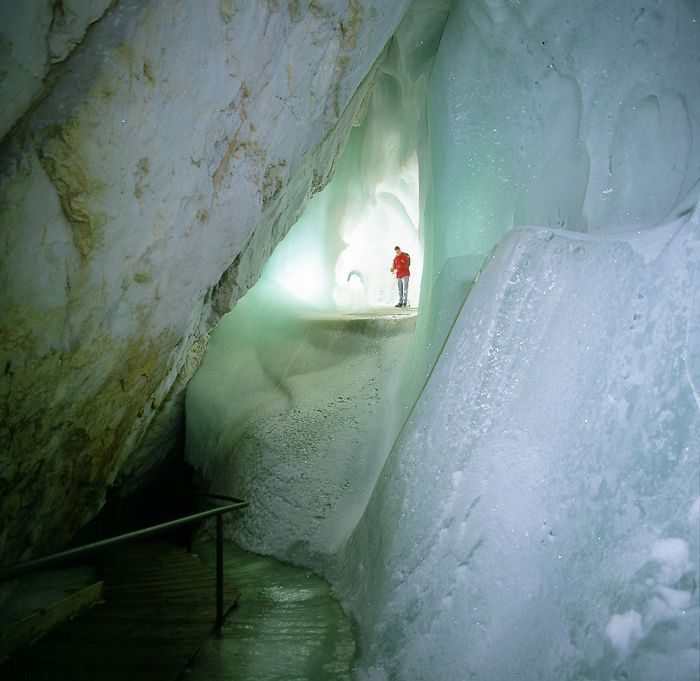
© Eisriesenwelt GmbH
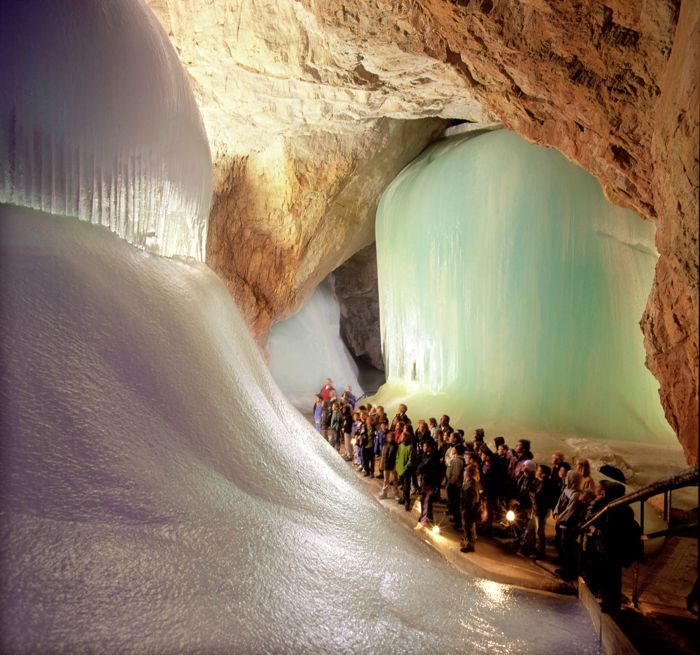
© Eisriesenwelt GmbH
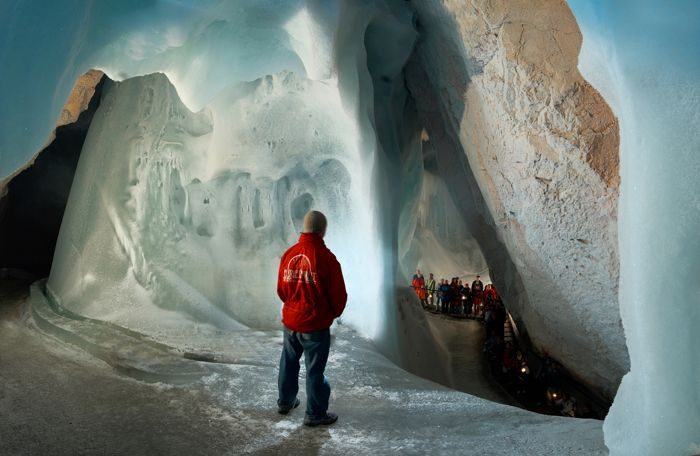
© Eisriesenwelt GmbH
Temperatures inside the cave are around 0°C and the route along the different chambers is actually a route that goes 700 steps up and then 700 steps down again. Yup, more climbing!
After my sunrise hike, I was up for the challenge, but I do think this is important to know this before you go. I hadn’t expected such a climb inside a cave at all. Now, you won’t be taking all 700 steps at once as the guide (there’s a tour every 30 minutes) stops frequently to give some information.
Honestly, I think the Eisriesenwelt is one of the things to see in Austria. I have to admit I had pretty low expectations for it, but it was amazing. It’s not just some ice in a cave, it’s huge amounts of smooth, think, milky ice rolling down. It’s impressive.
Eisriesenwelt
Eishohlenstrasse 30,
Werfen
Walk around Salzburg
Outside again, we warmed ourselves to the sunlight on our way back to the car before driving to the city of Salzburg, where we met with local guide Sandor. He gave us a quick guided tour and it didn’t take me long to fall for the city.
You know how it goes. Sometimes you just arrive in a place and know you’ll like it. It was like that for me with Salzburg and I think a lot of it had to do with the amazing views we got walking alongside the river Salzach and from atop the Mönchsberg.
There are different pathways that run up to the Mönchsberg, but you can also take the Mönchsberg Lift which goes up by the Museum der Moderne and Restaurant M32. It takes you 60 meters higher in 30 seconds and is open all-year-round, 7 days a week.
Ticket prices range from €2.3 for a single ride for an adult to €9.7 for an adult return ticket which includes entrance to the museum. However, if you have a Salzburg Card, both the lift and the museum are free.
If you check a map of Salzburg, you’ll see that there’s another hill right across the river from the Mönchsberg. It’s the Kapuzinerberg, another great place to go for a walk with a view of the city and also home to a church, an abbey, and some local wildlife. We didn’t have time to go up this mountain, so this is one of the places to visit in Salzburg for me when I go back.
What we did do, was visit the Augustiner Braustubl. It claims to be Austria’s biggest beer tavern and has its own indoor market hall where you can buy some hearty food from one of the stands to go with your drink. Or you can also just bring your own food as long as you have a drink. How cool is that?
There are two large “drinking halls” at the Braustubl with a combined seating area of 5000 m². One is dark, filled with heavy wooden furniture and a lively ambiance. The other is light and frequented by families on a Sunday who come to have a picnic here. That second hall is special because it’s actually the old… train station hall. Really! They’ve rebuilt it there when the old station was broken down to make way for a new one.
Aside from the halls, there’s also a large outdoor terrace with seats for no less than 1,400 people under lines of trees that protect both from the sun and light rain. The Braustuble is open all-year-long, every afternoon and evening, except on Christmas and New Year’s Day.
Practical information
We got a short custom Salzburg walking tour because our time was limited that evening, but you can easily book your own guide or join a group tour of the city when you’re there. This city tour including a visit to Mozart’s House comes recommended.
Dinner at Krimpelstätter
We had the last dinner of our trip on the terrace of the Krimpelstätter restaurant. I ordered a salad with chicken that could have eaten me instead of the other way around, but that didn’t mean I passed up on the Kaiserschmarrn for dessert. We were still in Austria, after all.
Krimpelstätter
Müllner Hauptstraße 31,
Salzburg
Sleep at Motel One Salzburg-Mirabell
I can highly recommend the Motel One Salzburg-Mirabell when you’re visiting Salzburg. It’s located by the river in a quiet area, walking distance from the Old Town and reasonably priced.
Want to stay at a central but quiet location in Salzburg as well? Check here for more reviews, prices, and availability for the Motel One Salzburg-Mirabell.
Day 8: explore Salzburg by foot and bike
It was the final day of our Austrian road trip and I think we were all determined to absorb as much of the country while we still could. We started with a quick tour of the Old Town as we made our way to one of Salzburg’s main attractions: Hohensalzburg Castle.
Visit Hohensalzburg Fortress
Looking out over the city from the Festungsberg, this Salzburg Fortress can easily be spotted from anywhere in the city. Dating back to 1077, the Schloss Hohensalzburg underwent several expansions throughout the centuries. What’s cool is that you can watch a video in one of the rooms of the castle that shows you exactly which parts were added when.
The other rooms are quite cool too, sometimes majestically decorated and other times reminding you how hard life must have been “back in the day”, even for the nobility who got to live in a castle.
The Schloss Hohensalzburg is well-maintained and its room now serves as a museum that showcases how people used to live there, but also tell the story of Salzburg history. Yet no matter how fun it was to roam the halls, my favorite part of our visit was walking along the castle walls and admiring the view of the surroundings.
Practical information
To get to the Schloss, you can to take the funicular at the FestungsBahn Bergstation or walk up and then take the funicular back down again. If you take it up, takes you straight onto the castle walls. There’s an information point, a restaurant and a tavern. There are also toilets inside the castle and those who want to can visit the ever-present souvenir shop.
The Schloss is open all-year-round though Salszburg Castle opening hours vary depending on the time of the year. The same goes for the funicular. Get current information here.
There are different ticket prices depending on what you want access to at the castle, ranging between €9.20 and €15.20 for adults at the time of writing. However, this is also one of the attractions in Salzburg you can visit for free if you have a Salzburg Card.
A bike ride
After our visit of the Fortress Hohensalzburg, it was time to pick up our rental bikes and leave the Old Town behind us. We’d cycle to Schloss Hellbrunn, famous for its water games, but not before making a few stops first.
Our first stop was one that’s included in just about any “Sound of Music” tour: Schloss Leopoldskron. Now a hotel that can only be accessed by guests, the Schloss was used as an outdoor location for the movie, “playing” the part of the exterior of the home of the Von Trapp family. For fans of the movie, this probably makes it the most important castle in Salzburg and one of the best-known castles in Austria.
Did you know, by the way, that the actual story of the Von Trapp family is not quite like the movie? There’s a book about it.
We paused at the other side of the Leopoldskron Weiher, the lake that’s part of the castle grounds. From there we could spot the Schloss with the Festung Hohensalzburg in the background. Double whammy.
Want to go on the renowned Sound of Music tour? You can book it here.
Have lunch at the Greisslerei – Gwandhaus
We cycled on until we reached the Greisslerei at the Gwandhaus, which was probably the most idyllic spot we had lunch at during our entire trip. Part of the buildings owned by the famous traditional Austrian clothing company Gössl, the Greisslerei sells and serves local products.
We had meats, cheese, chutney, bread and more goodness on the spacious terrace while other people were enjoying a grass of wine in the garden. I strongly started to wonder while Austria is so famous for it’s winter sports as the best time to visit Austria is clearly summer. Sunshine, good food, bike rides. Bliss.
Unfortunately, I’ve been told that the Greisslerei left the Gwandhaus and will soon open at a location in the city center. Luckily, a new restaurant will be opening at the Gwandhaus soon so you’ll also be able to enjoy some deliciousness at the large terrace there.
Gwandhaus
Morzger Str. 31,
Salzburg
Check out some Austrian dress
Our energy refilled, we took the elevator up to the Gössl store. This is where you can find Austrian traditional dress of the finest quality (with the accompanying prices). Yes, they make the famous Austrian lederhosen and I got to feel the fabric and how thick yet smooth it was.
Sandor told me that most men only buy one lederhosen to last them a lifetime. And then try not to gain or lose too much weight.
If you’re only buying something once, you want it to last and to be decent. That explains the success and prices of Gössl. When you visit the store – which, by the way, also has a tiny museum – you can actually peak into the workshop where all of the clothes are handmade and customized to match the buyer’s preferences.
And these aren’t clothes that are only worn on special occasions. During out eight days in Austria, we saw plenty of people in their traditional Austrian wear going about their day-to-day business. It wasn’t just the mayor in Ausseerland who welcomed us in his lederhosen outfit, no, we saw traditional clothing everywhere.
Well, okay, maybe not in the big cities. But in the small villages? Everywhere.
I’m very much looking forward to when I’ll get to wear a dirndl on my trip to Zillertal in September. For now, I had to content myself with playing the game of trying to decide which dress in the store I liked best.
Visit the water games of Hellbrunn
Done admiring that Austrian craftsmanship, we cycled onward to our final stop of the day: the Schloss Hellbrunn. This truly is one of the places to visit in summer. Schloss Hellbrunn is a “pleasure castle”. Nobody actually lived there as it was only used for hunting on the castle’s grounds and for, well, fun!
A part of the garden consists out of a route along the water games. Basically, they’re games or moving displays that will spray you wet when you least expect it. They’re quite amazing as they were invented and built in the 17th century and they still work exactly as they used to, using only water force and no electricity to keep the fountains working, activate sprayers and make puppets move around a stage.
The Schloss itself can be visited itself and gives you an impression of what things would have been like a few centuries ago.
Practical information
Schloss Hellbrunn is open daily from April until October with opening times depending on the time of the year. An entrance ticket for an adult costs €12.5 at the time of writing and includes a guided tour of the water games. These can, by the way, only be visited with a guided tour as someone of the castle’s staff needs to turn the games on.
You can find updated opening times and ticket prices here.
We cycled to Schloss Hellbrunn with bikes we rented in Salzburg’s city center. You can also drive there should you be road tripping or take a boat from the Old Town. This boat ride comes recommended.
Catch a flight home
And that was it. We drove back to hand in our bikes and pick up our luggage from the hotel. Our #AustrianTime trip had come to an end. I know I’ll visit Salzburg again and even after this short stay, I feel confident to recommend it as one of the cities to visit in Austria.
It was one hell of a trip and I hope our itinerary will help you decide where to go in Austria and plan your own road trip to Austria in summer, as it’s the perfect season to visit the country. You’ll have a great time. Promise :-)
Practical information for travel to Austria
As I spent two days in Vienna before joining the others in Innsbruck, I flew from Brussels to Vienna and then I took the train from Vienna to Innsbruck. To go home, we flew from Salzburg directly to Brussels. It’s possible to book flights to Innsbruck as well but there are no direct connections from Brussels. You’ll have to change plans somewhere.
Before booking, it’s best to compare flight prices across different airlines and see which price/time/connection combination works best for you depending on where you’re coming from. Skyscanner gives a good overview of all your options.
For train timetables and prices within Europe, look here.
The car we drove around in was a rental from Sixt, a company I’ve rented from in the past as well. You can compare rental car prices for a ton of companies on Rentalcars.com. This site always gives you the best deal.
Don’t forget travel insurance
Plan for the best, prepare for the worst. Travel insurance has you covered in case (part of) your trip gets canceled, you get sick or hurt abroad, and sometimes even when your electronics break or get stolen. I always make sure I’m covered every trip I go on.
Don’t have travel insurance yet? Check out SafetyWing. They offer super flexible plans that you can even sign up for while you’re already on your trip. On top of that, they were the first travel insurance to cover COVID, and when I got COVID, they reimbursed all of my expenses without making a fuss. Their customer support team is great and I can personally recommend them.
Don’t forget travel insurance
Plan for the best, prepare for the worst. Travel insurance has you covered in case (part of) your trip gets canceled, you get sick or hurt abroad, and sometimes even when your electronics break or get stolen. I always make sure I’m covered every trip I go on.
Don’t have travel insurance yet? Check out SafetyWing. They offer super flexible plans that you can even sign up for while you’re already on your trip. On top of that, they were the first travel insurance to cover COVID, and when I got COVID, they reimbursed all of my expenses without making a fuss. Their customer support team is great and I can personally recommend them.
PIN FOR LATER
I went on this trip to Austria as a guest of the Visit Austria tourism board. As always when I enter in collaborations like this one, I was free to write whatever I wanted and all opinions here are my own.

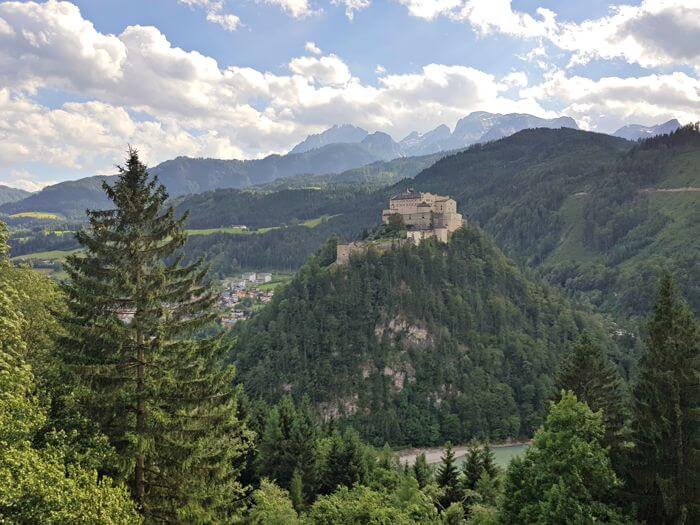
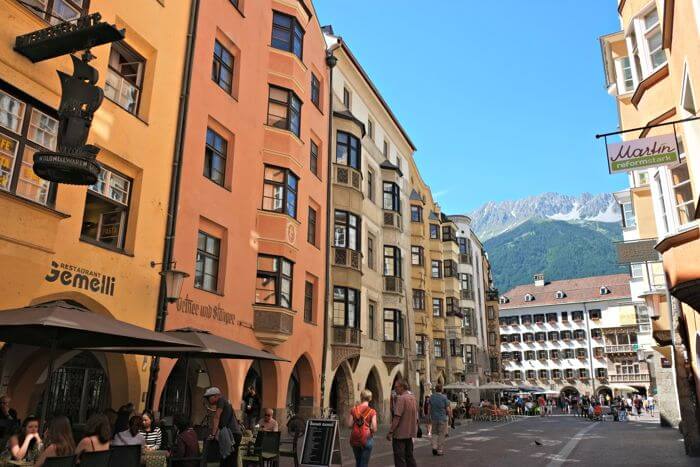
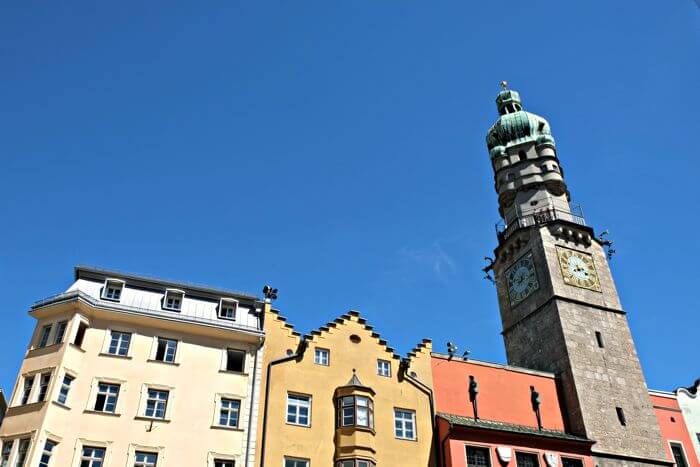
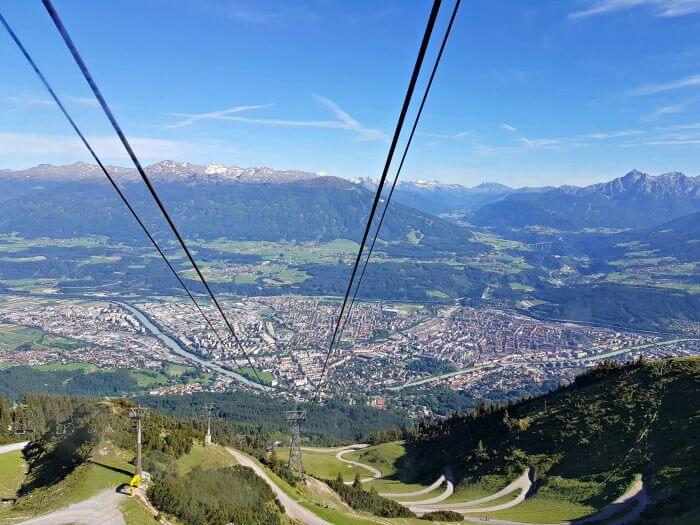
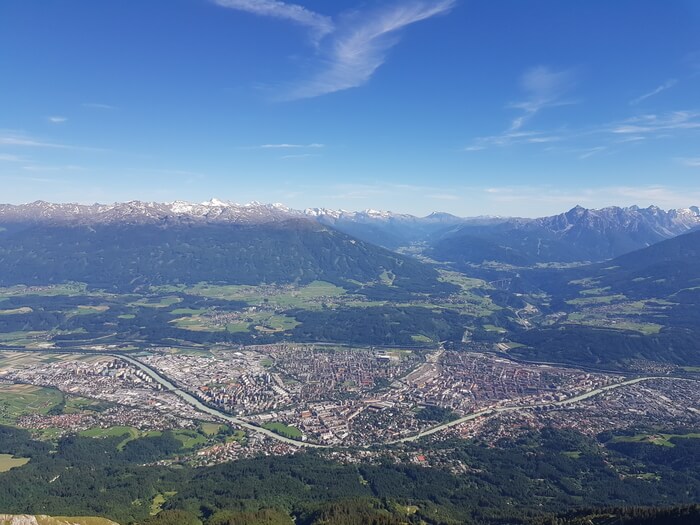
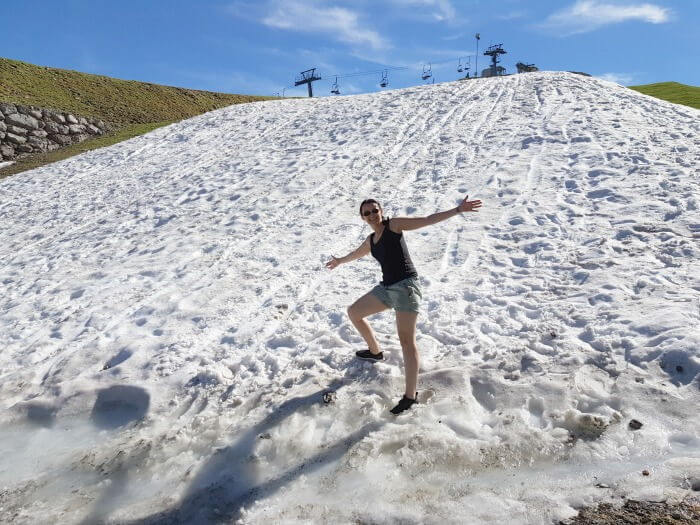
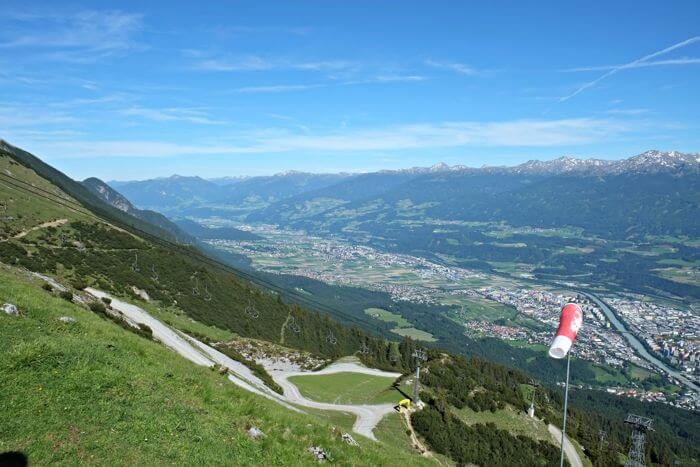
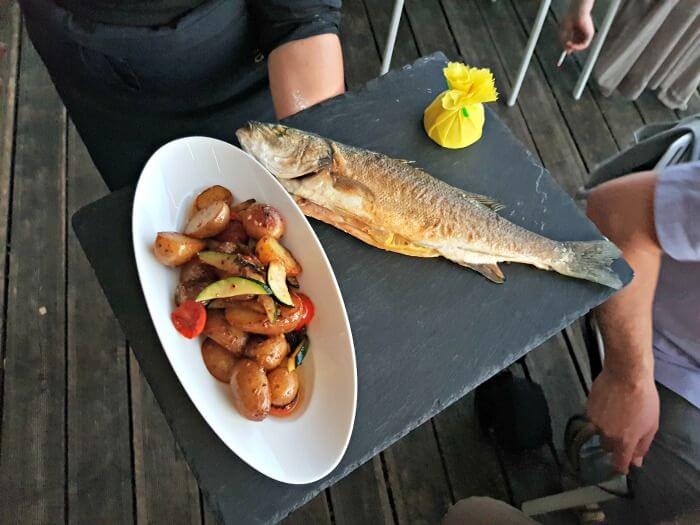
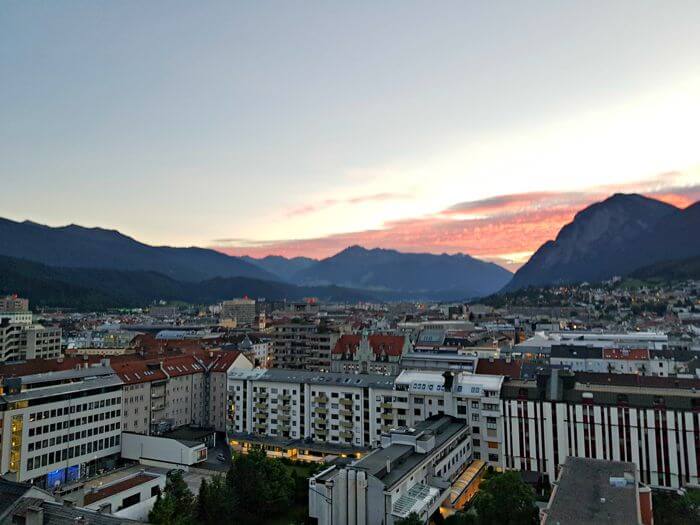
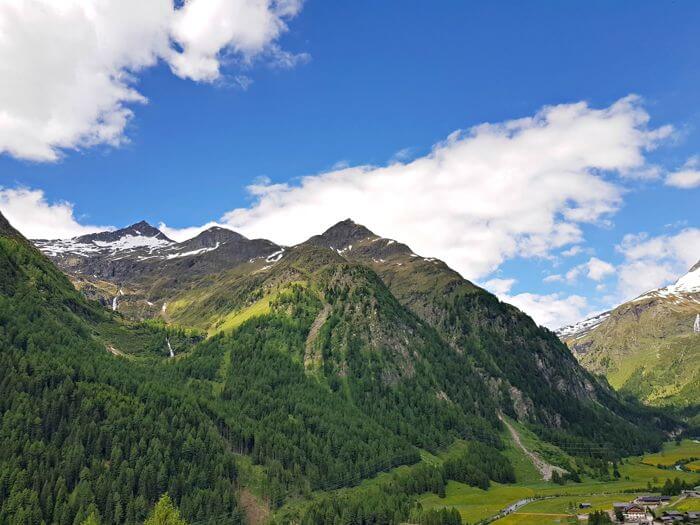
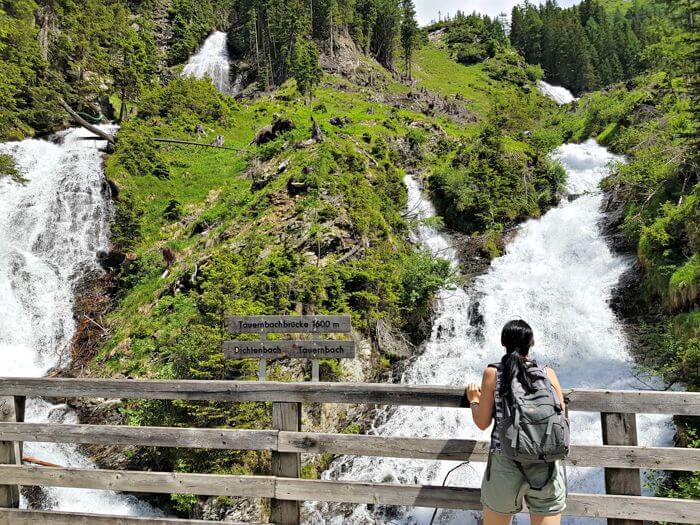
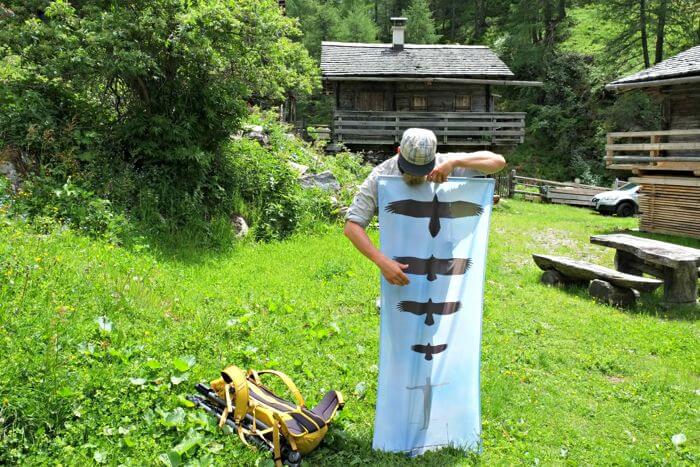
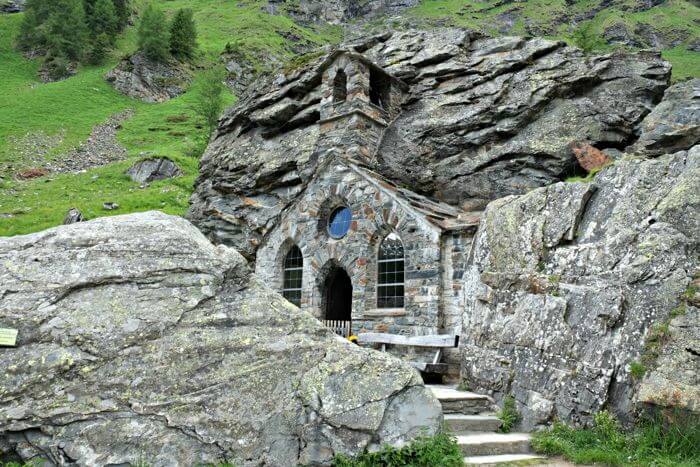
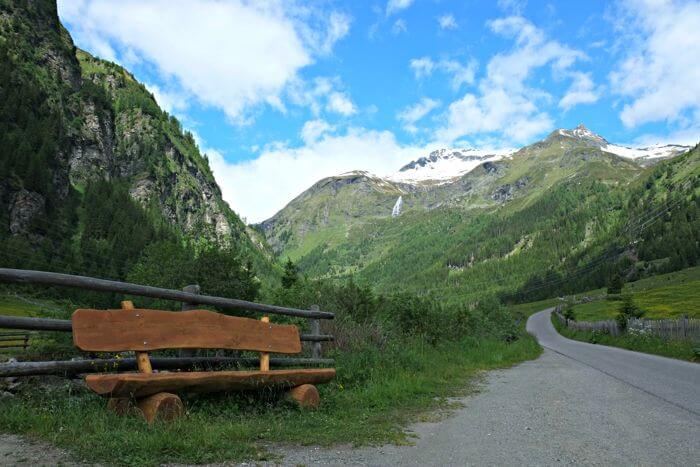
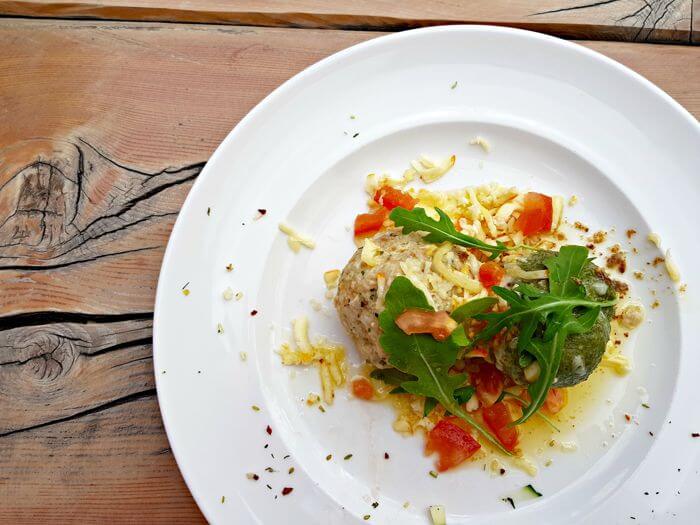
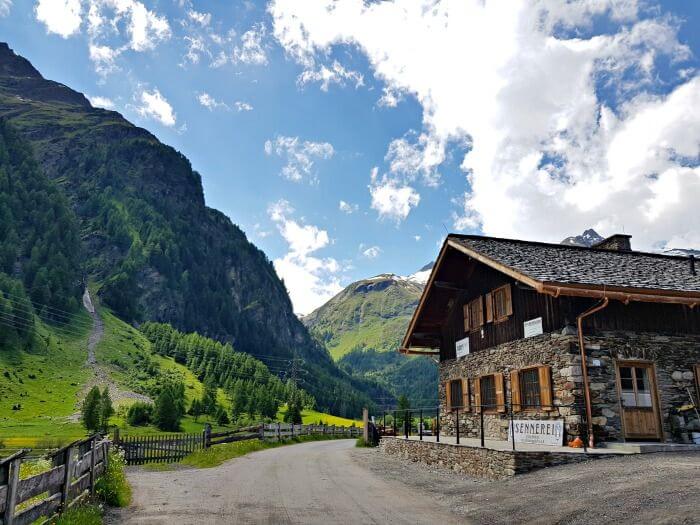
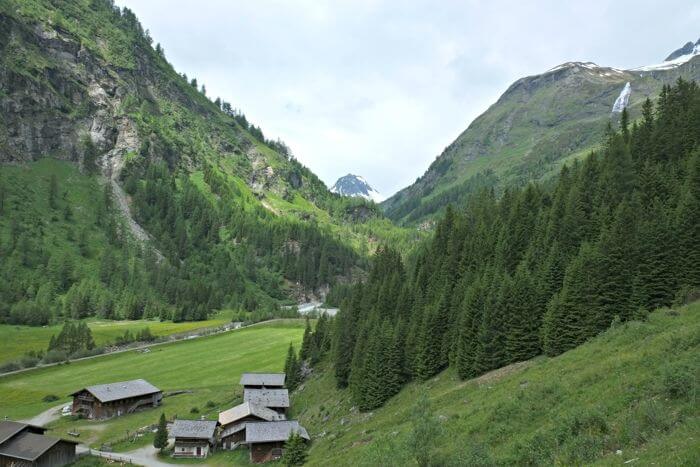
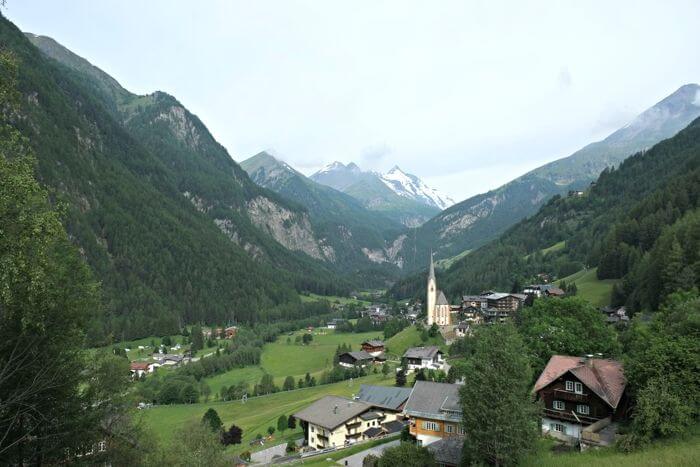
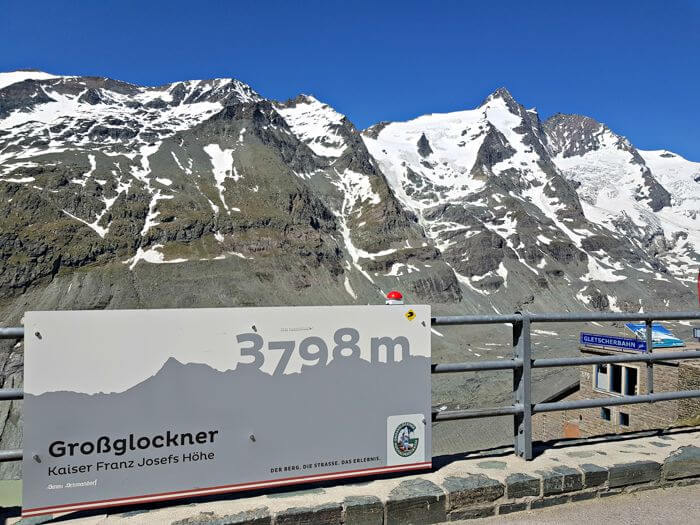
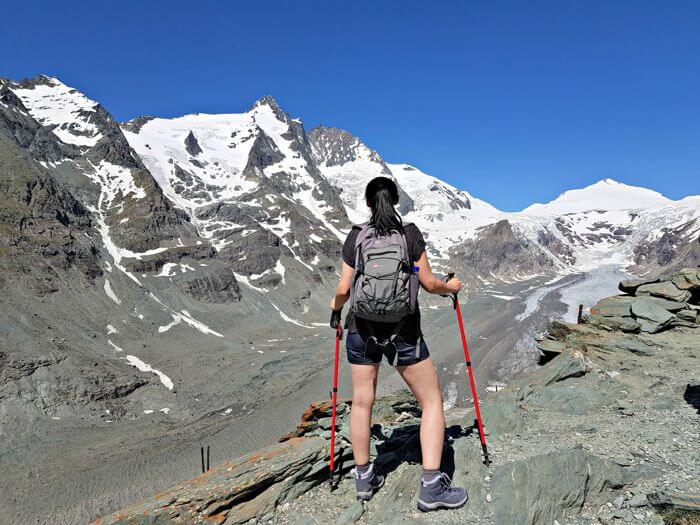
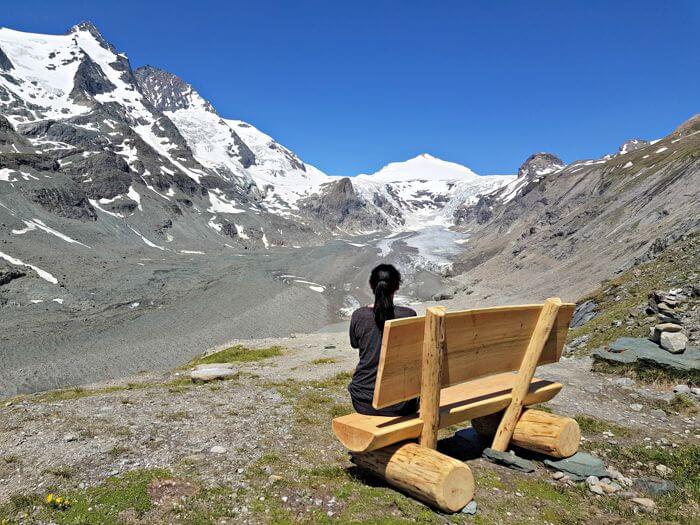
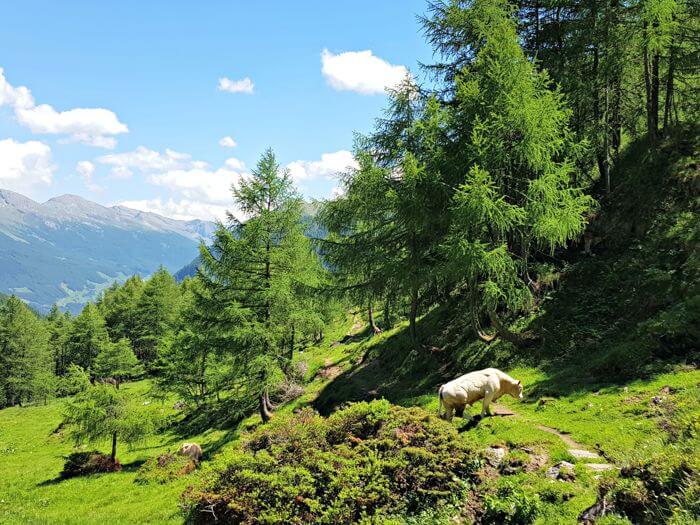
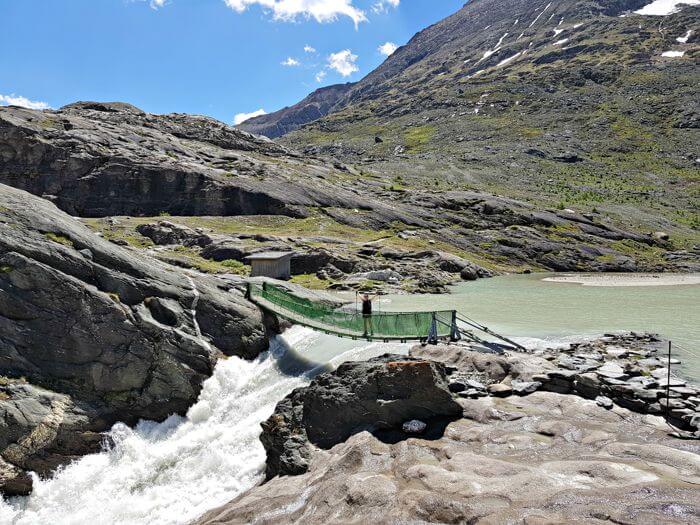

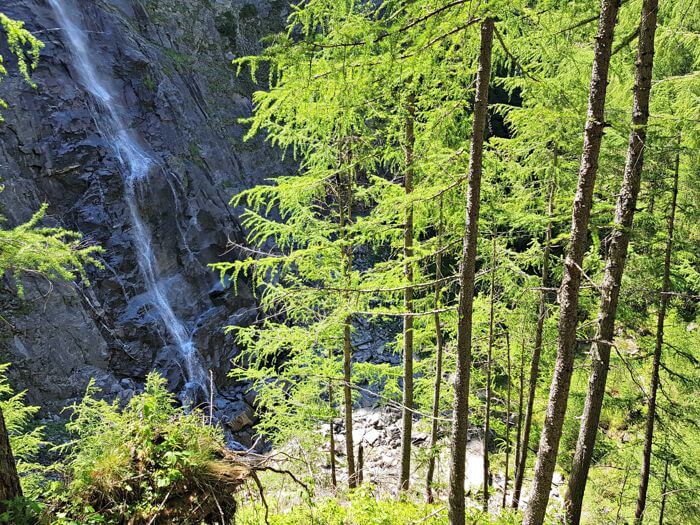
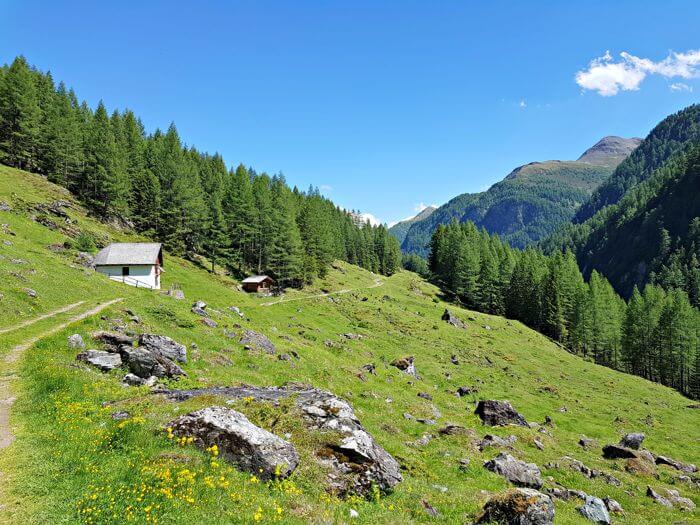
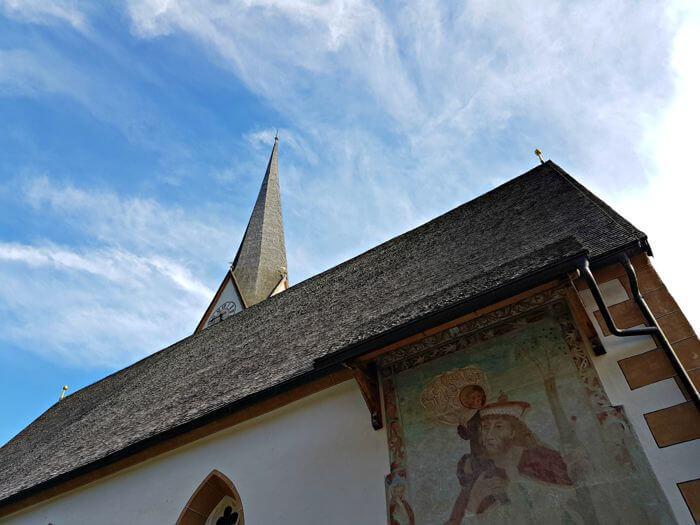
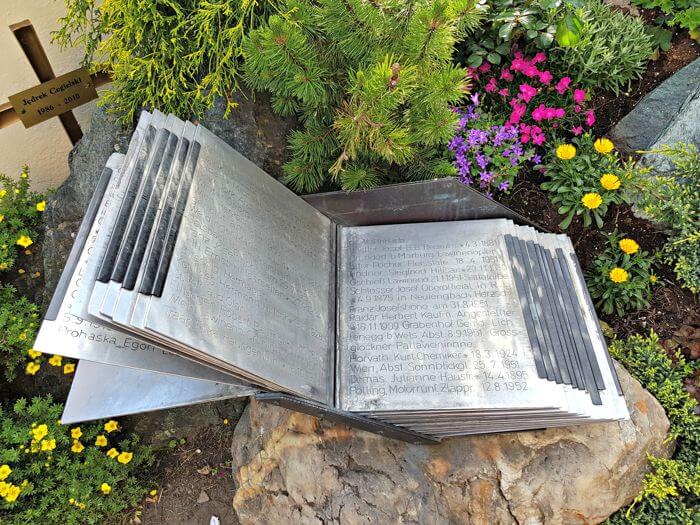
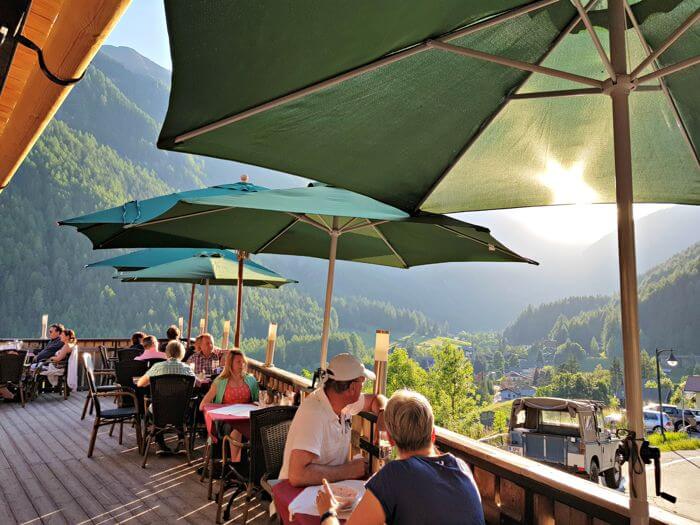
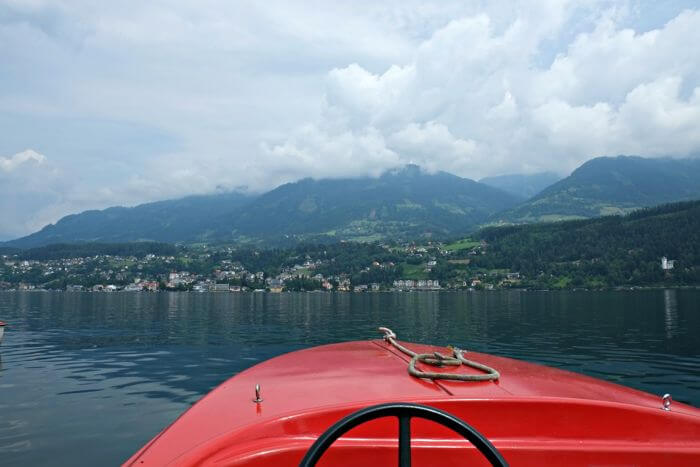
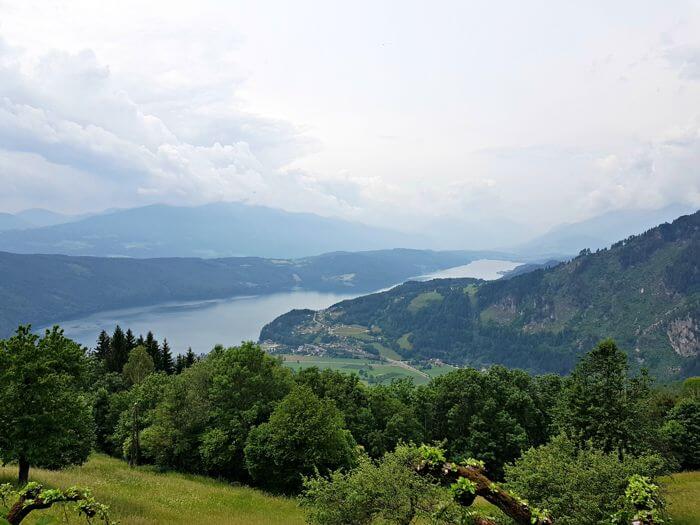
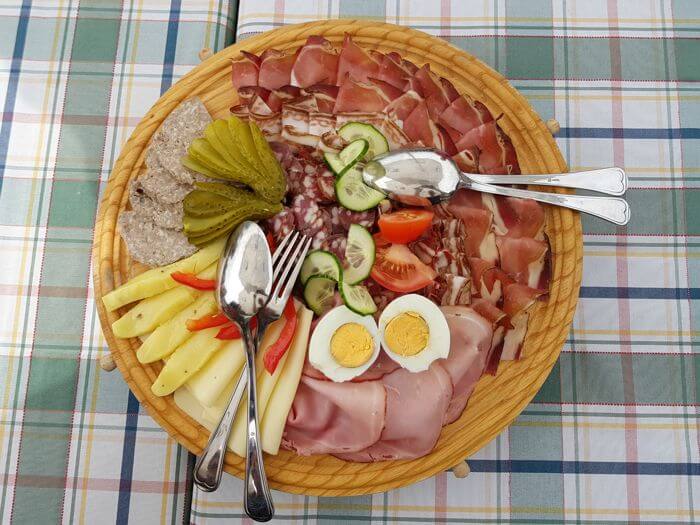
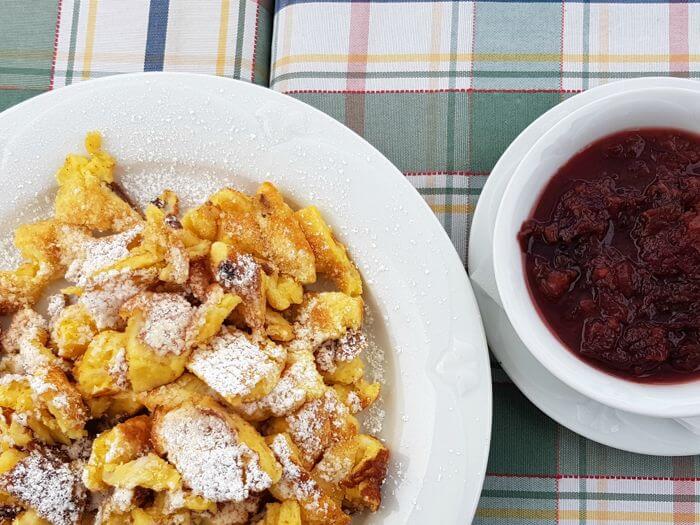
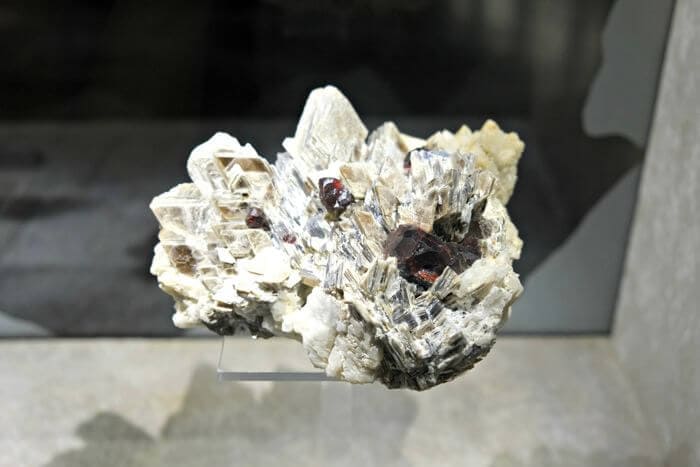
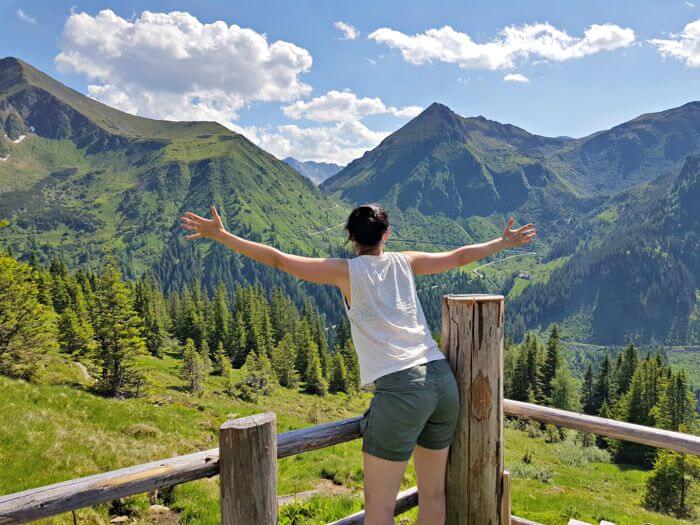
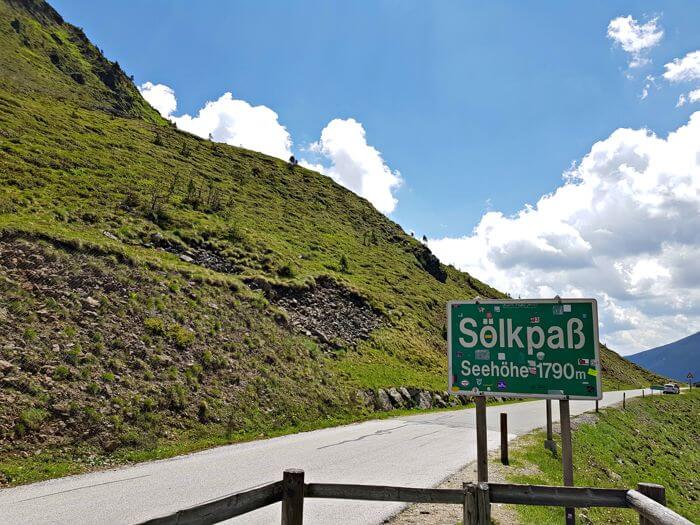
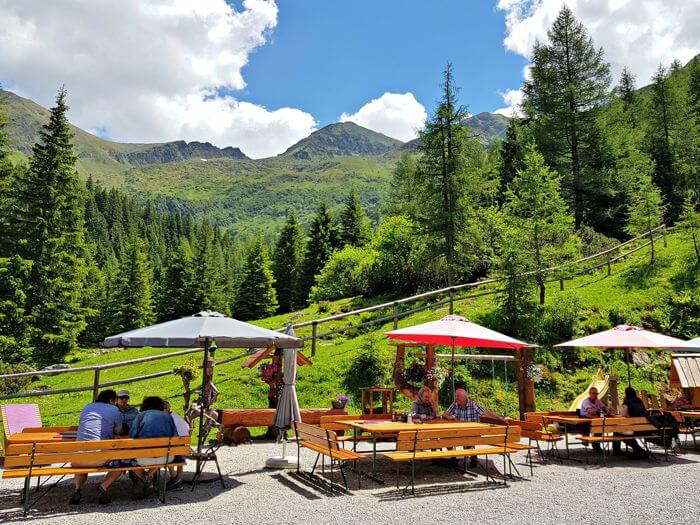
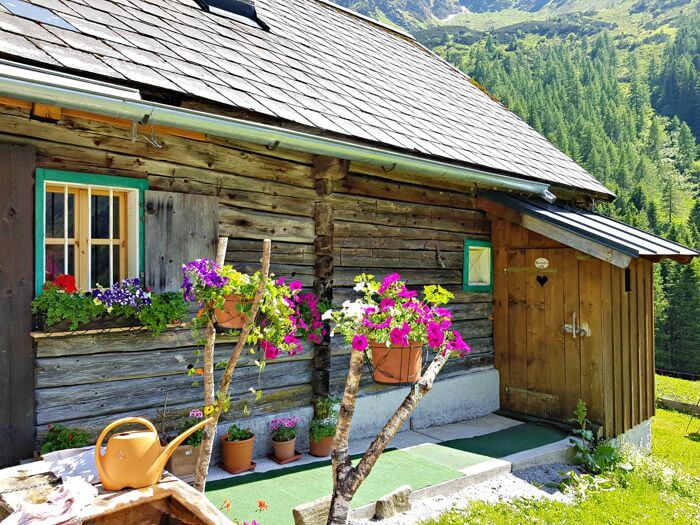
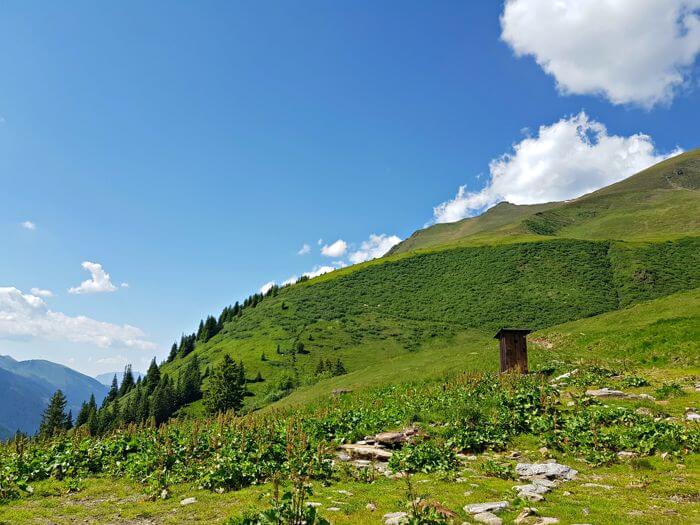
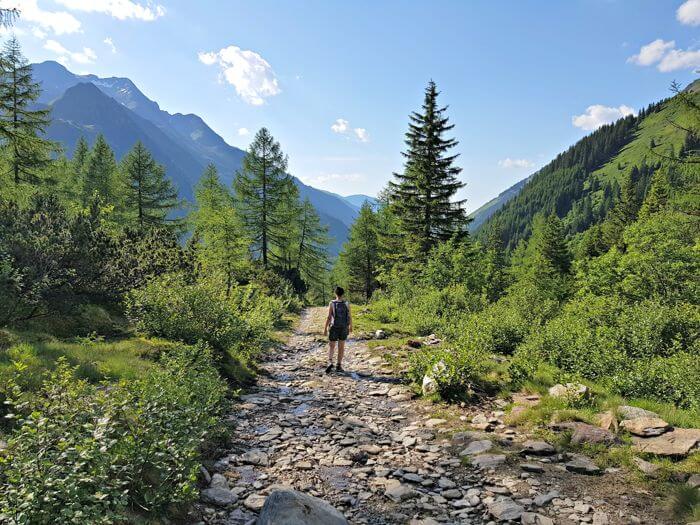
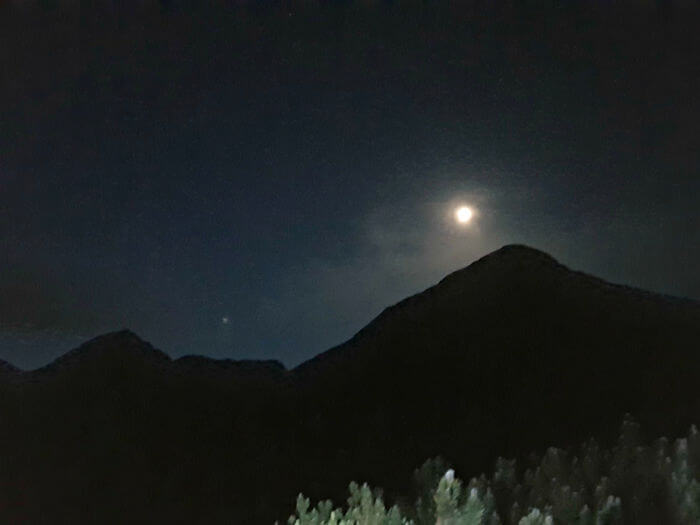
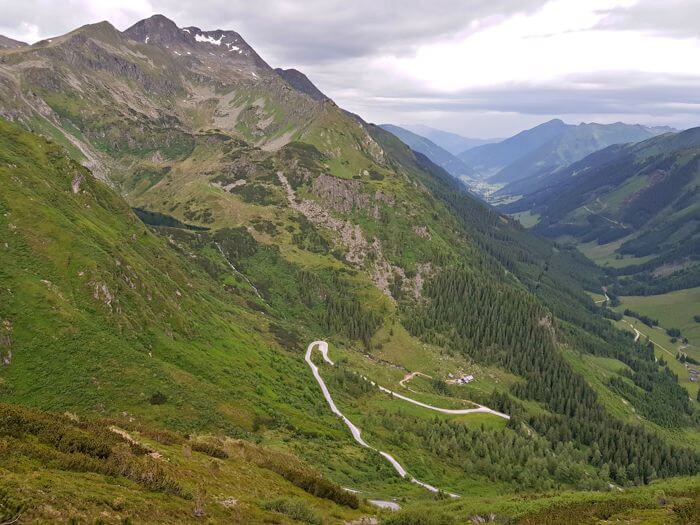
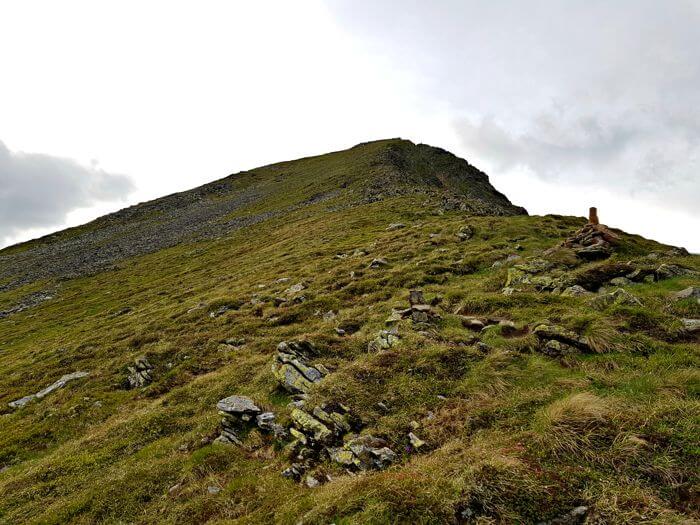
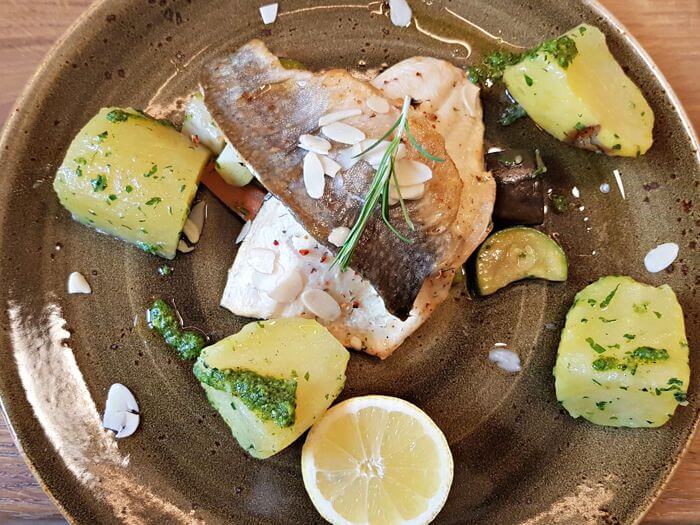
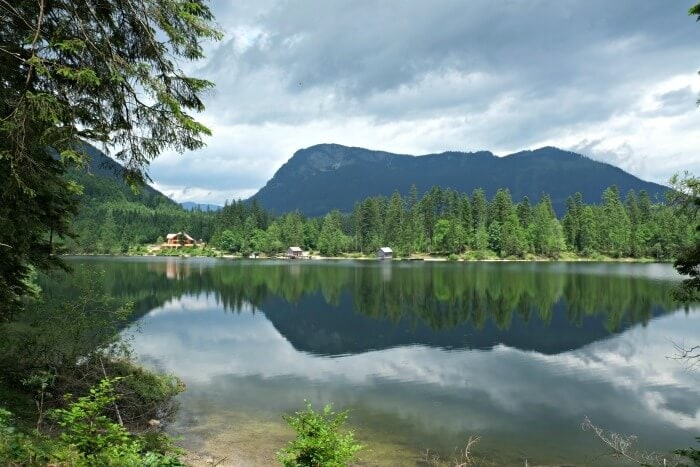
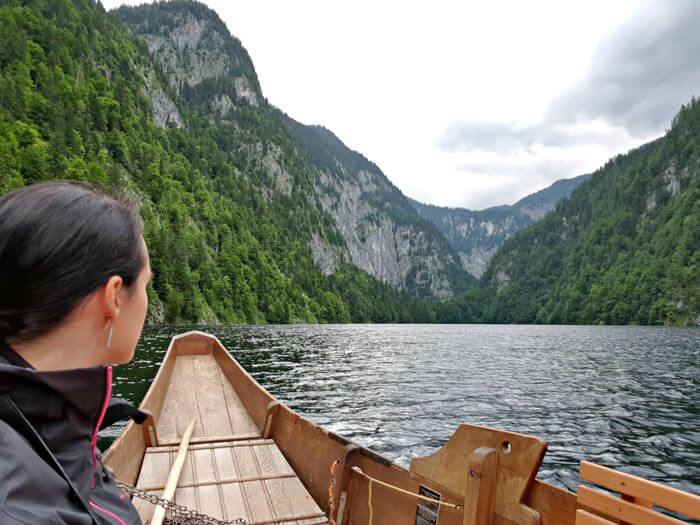
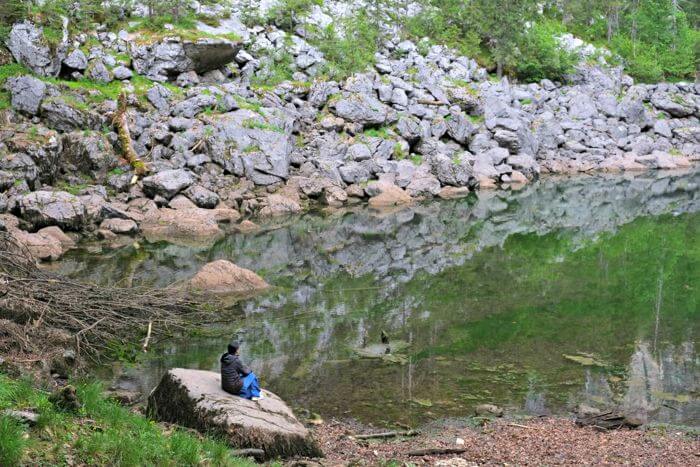
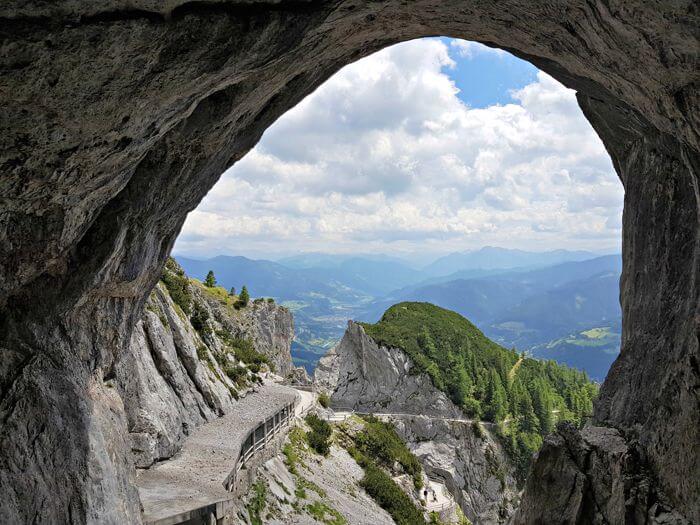
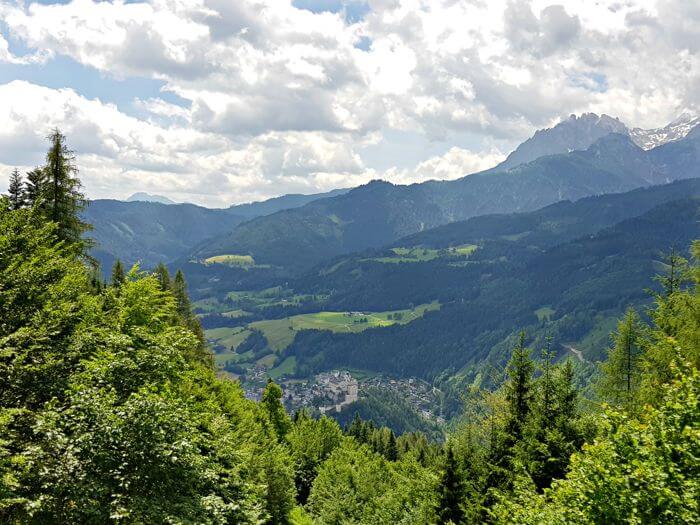
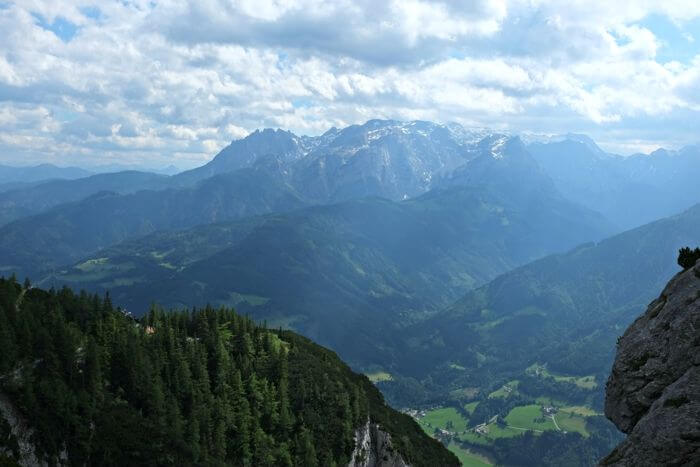
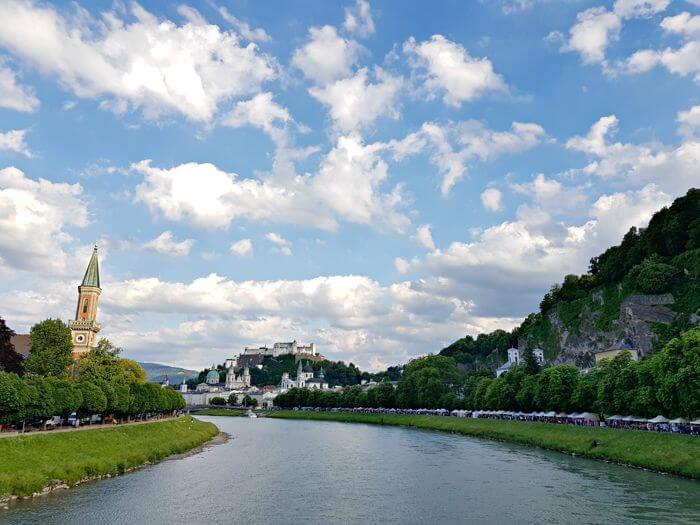
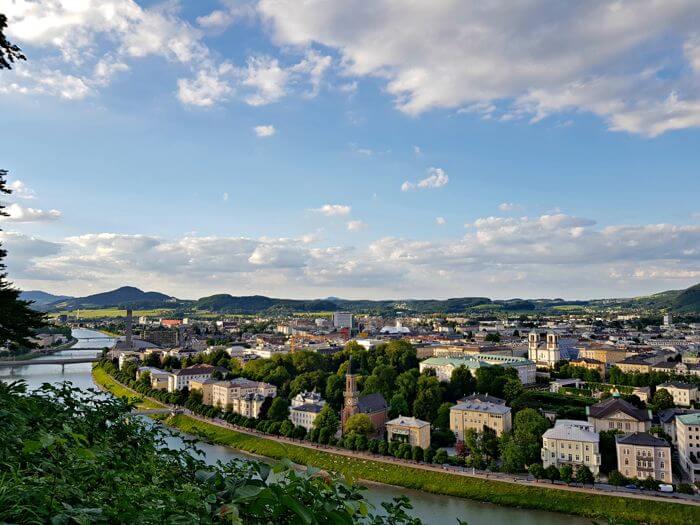
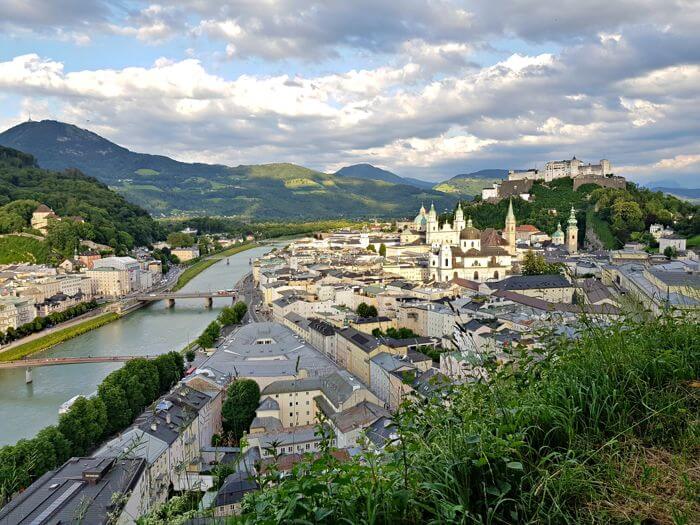
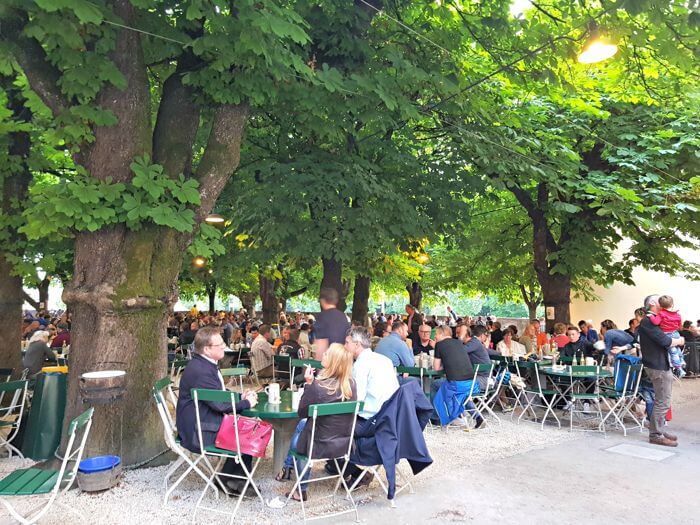
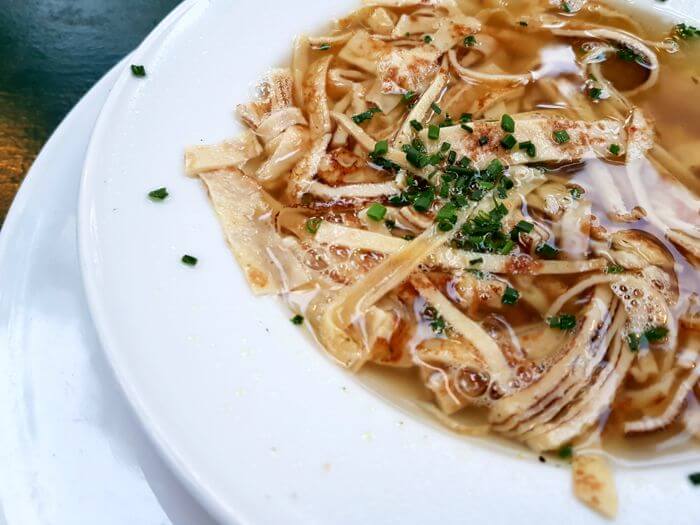
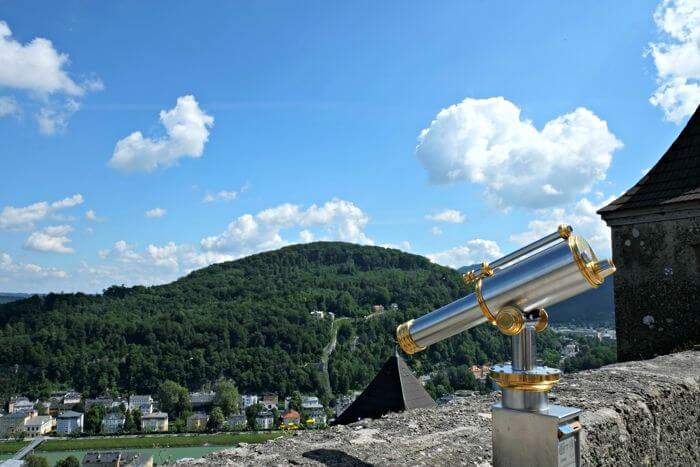
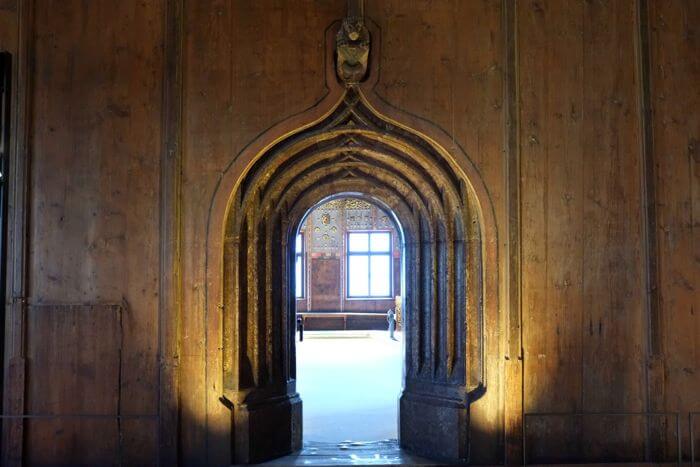
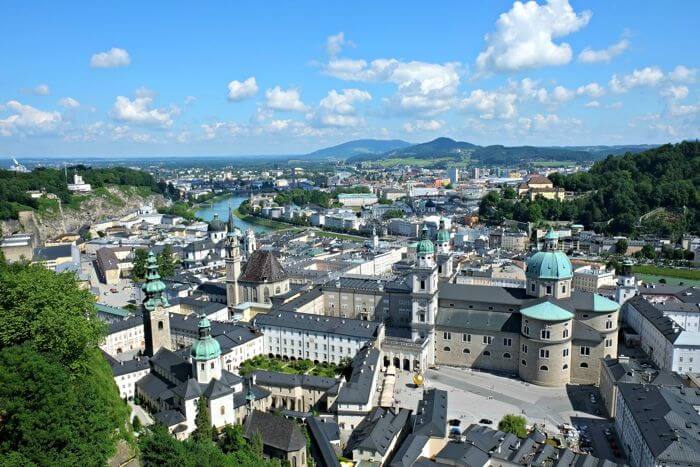
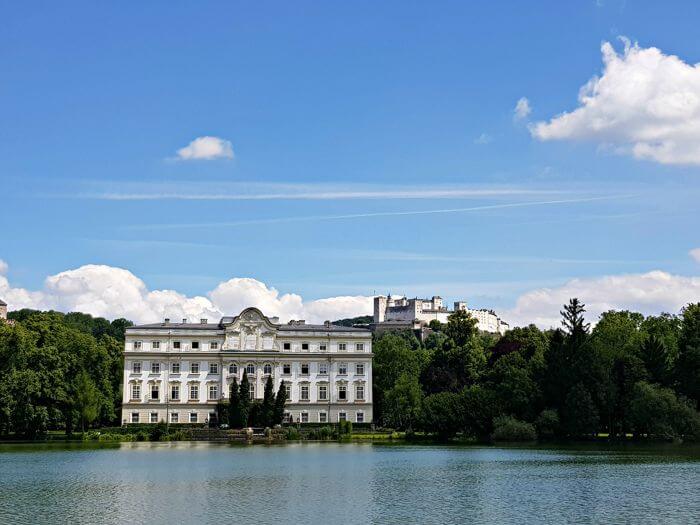
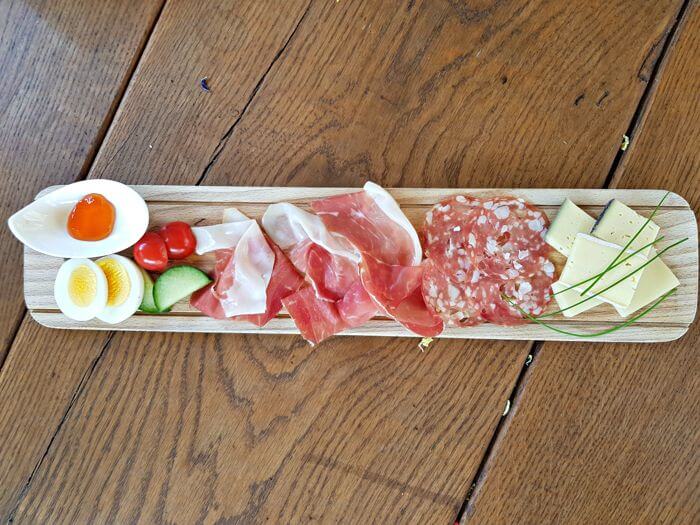
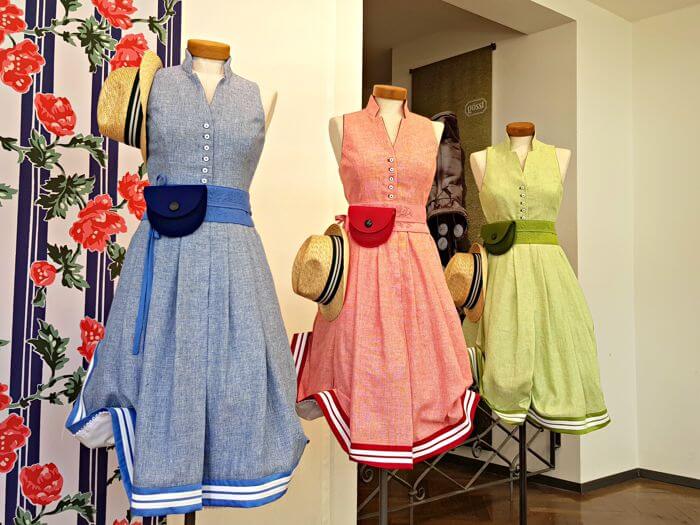
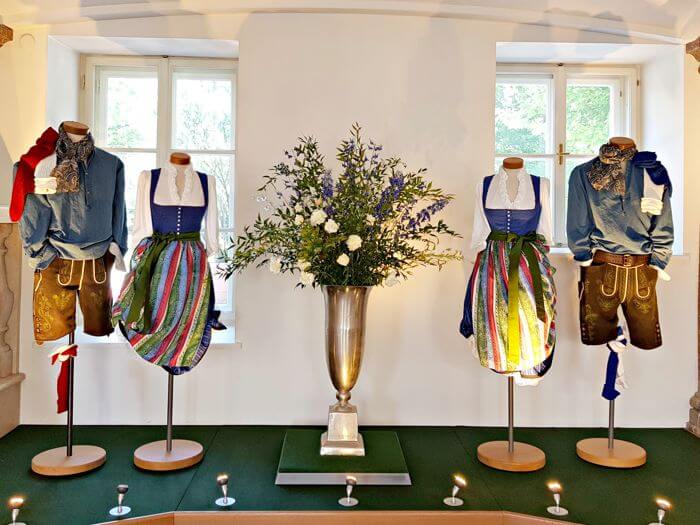
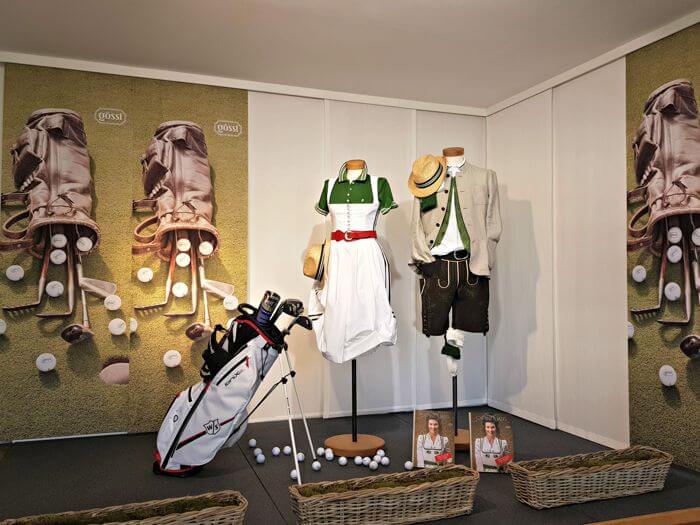
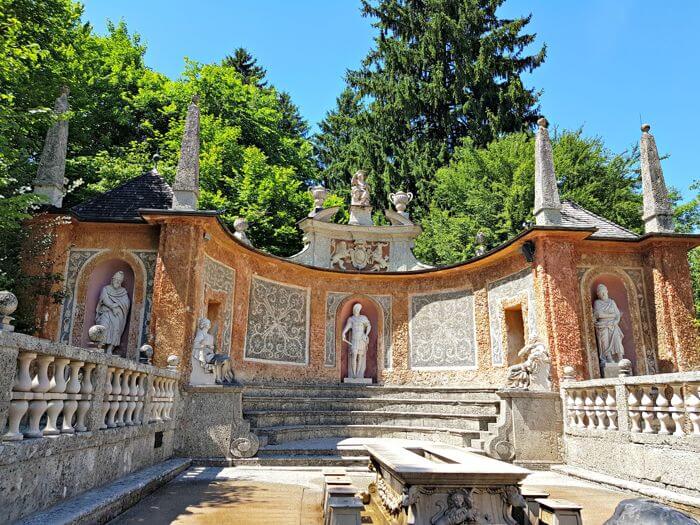
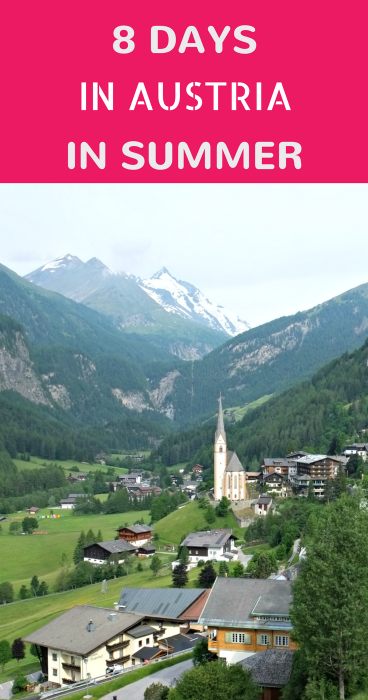
Doug says
Hi your post is terrific. I will be studying it to learn how to inprove mine.
I have been trying to create shorter posts so I could take one like yours and make 9 or 10 posts out of it.
Blog on!
Sofie says
Thanks!
Dani says
WOW. Read this from start to finish, and it was the best decision I made all afternoon. Can’t say traveling to Austria (or anywhere in Europe) ever crossed my mind, but after this blog, I’m inspired. My favorite parts of your trip were your lunches/dinners with a view! I already felt major envy at your dinner at aDLERS and the lovely view of the city – yet that pales in comparison with everything that follows. And wow, dumplings in Austria!
I was also particularly charmed by the view from inside Eisriesenwelt. Austria seems like a lovely country to get lost in!
Sofie says
That’s the best compliment you can give me, Dani, that my post makes you want to travel to Austria :-)
This country really has one breathtaking view after the other. It’s crazy!
Vidya says
Hi Came across this page just now and read it thro My family of 3 will be holidaying in Austria this coming summer and your blog certainly has given me a lot of ideas about travelling in Austria My husband suffers from severe vertigo and can’t take small cable cars as well as walk up steep areas Your mention about this makes me ask you this question How do you handle it (vertigo) and any solutions that could help ? My husband is 61 and experienced fear when we took a small cable car to Kleine Scheidegg in the Swiss Alps when we visited there We returned back from the first cable station to base then
Will check your blog for other places you’ve been to.
Vidya
Sofie says
Hi Vidya,
I’m sorry to read your husband also suffers from vertigo. I used to have it very badly but the more I spent time in the mountains, the better it got. I still have vertigo now but I do already dare to take cable cars up. I just need to make sure I sit facing up the mountain and need to focus on my breathing to remain calm. It also helps when I’m with people I feel comfortable with and I try to avoid situations where I’m somewhere high with people who act a bit “wild”.
It’s perfectly possible to enjoy Austria without taking cable cars and walking along steep cliffs. Most of the regions have all available walking routes on their websites and usually, there are indications of steepness but not really of whether the routes go along cliff edges or not so it would be best to ask about that at your hotel or at the local tourist office when you are there.
A lot of hikes start down below in the valleys as well so you wouldn’t need to take a cable car if you’re willing to hike up and then down again. Sometimes there are also hikes of which the start and end points are connected by bus and you can go back that way.
I don’t know how bad your husband’s vertigo is but if his fear is manageable, I would try to take a bigger cable car up maybe once or twice. He’ll be scared – I always am too – but he’ll also be super proud of himself when he’s done it and it does open up more opportunities for exploring.
I’m still scared whenever I need to take a cable car but doing it multiple times a year has helped me deal with it and it’s better now than it was a few years ago. I hope it can get better for your husband too.
Have a wonderful trip to Austria!
Satya Patro says
Hi Sofie,
Very beautifully written article on Austria. I am planning to visit Austria in July of this year. I will be going with my wife and two small kids (2 and 7 years old). I don’t think it will be possible to hike and walk a lot with small kids. I would really appreciate if you can suggest me places to visit in Austria where I can take my family with small kids.
Sofie says
Hi Satya,
Thank you!
I’m afraid I don’t have specific advice on traveling with kids as I don’t have any kids myself and never travel with them.
I have seen people go hiking with small kids though. The smallest, they carry in a special carrying backpack and most if not all places in Austria have family-friendly trails which are super easy, short, and have things to do for kids along the way.
I’d also have a look at the Serfaus-Fiss-Ladis region as it’s very kid-friendly.
All the best!
theresa agbo says
Such a helpful post. Thank you so much!
Sofie says
Glad you liked it!
Mil says
hi, how much cost it all for this trip for one person?
Thanks
Sofie says
Hey Mil,
I don’t know by heart, but you can find the prices for everything we did and all the places we stayed at online.
You can also always make things more budget-friendly by renting a smaller all, staying at cheaper placer or at apartments, cooking your own meals etc :)